Best road bike wheels 2025: Aero options for a faster ride
The best road bike wheels can transform your ride, so take advantage of our testing to choose the right wheelset for your riding

Upgrading the wheels on your road bike is one of the best performance-enhancing upgrades you can do as best road bike wheels can increase speeds, reduce rotating weight and improve reactivity.
The biggest performance gain from upgrading your road wheels is aerodynamics, although you can opt for deeper or shallower, 40mm to 50mm is typical for the best all-round performance. This depth offers aero efficiency without excess weight and without becoming difficult to manage in crosswinds.
It's difficult to compare wheelsets' aerodynamics based on manufacturers' claims, as protocols differ and results may be presented differently. So we took 18 mid-depth wheelsets to the Silverstone Sports Engineering wind tunnel in November 2024 to test them head-to-head under the same conditions.
The full results are available to Cyclingnews subscribers, whose subs helped to pay for wind tunnel time, but we've used them to inform our picks here.
Pro teams often switch between different wheel depths for different terrain. If you're looking for a climbing wheelset, we also have a guide to the best lightweight wheels, while we have deeper options and disc wheels covered in our guide to the best triathlon wheels.
Below you'll find our picks of the best road bike wheels we've tested here at Cyclingnews and lower down there's a buyer's guide to how to choose, as well as an explainer of some of the terms you'll come across when looking for the best road bike wheels.
Best road bike wheels: Quick list
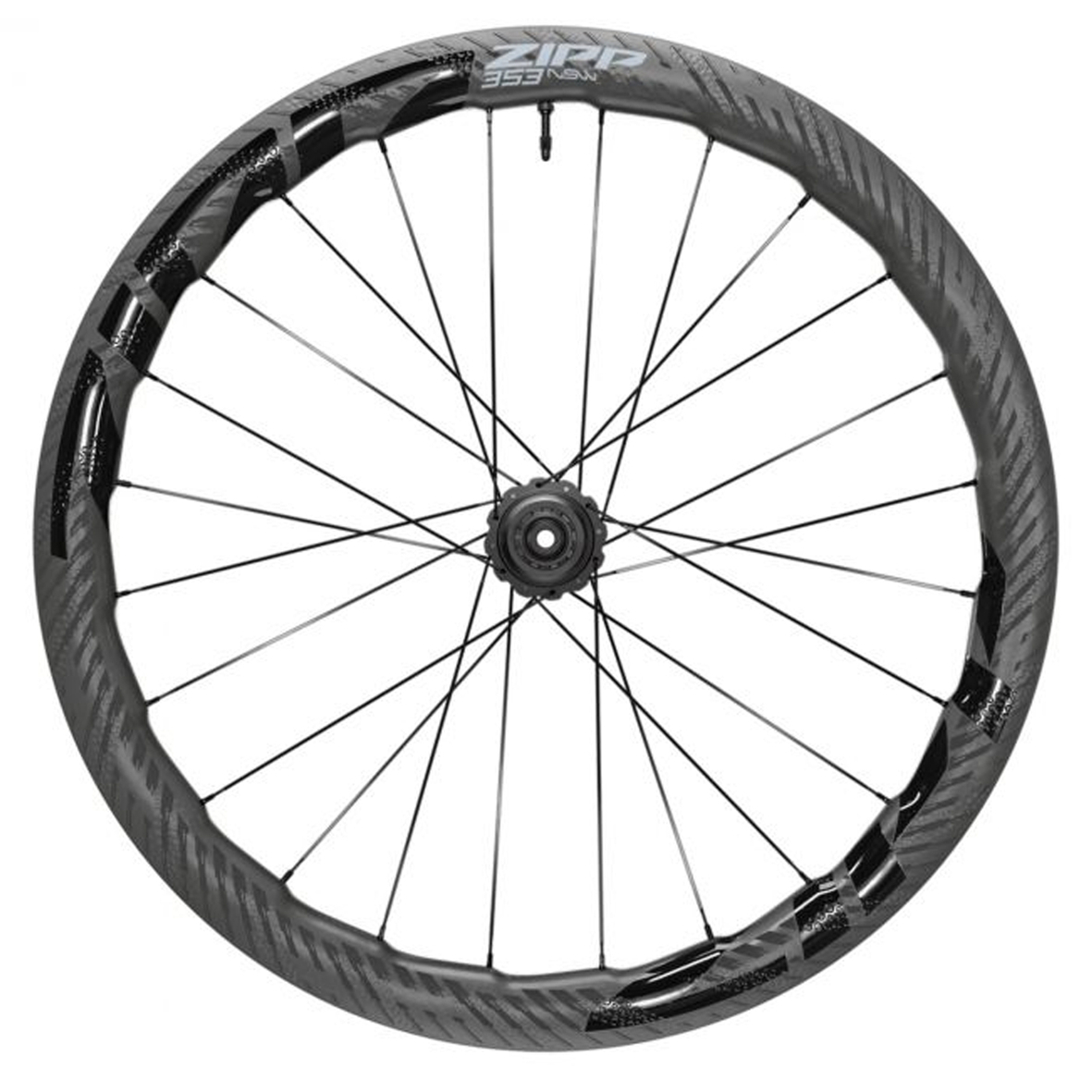
Although the sawtooth profile and low weight are the talking points for the Zipp 353 wheels, it was the comfortable ride and crosswind stability that we found most impressive.
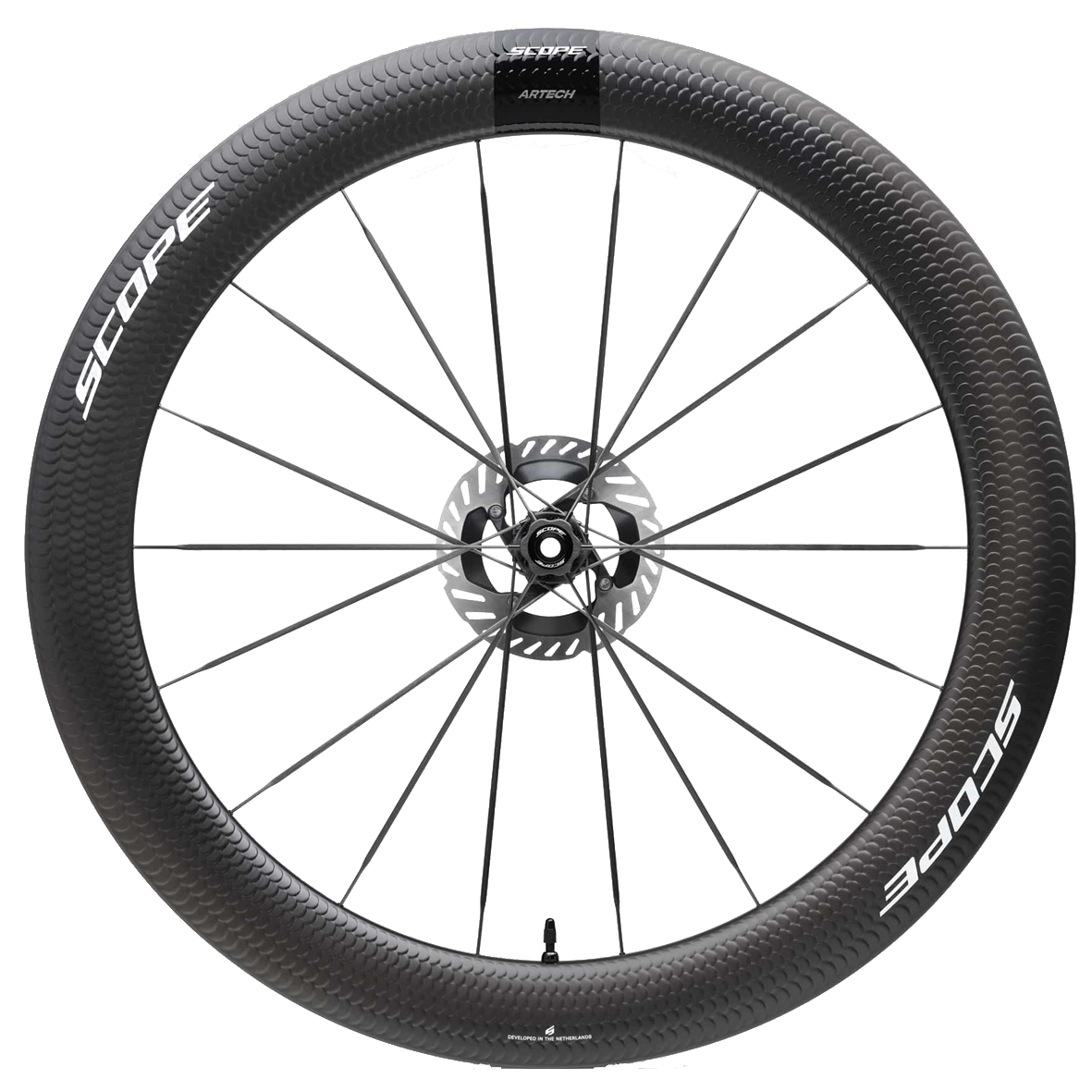
The fastest wheelset in our wind tunnel tests and particularly efficient at high yaw angles, the Scope wheels are low weight and designed for wider tyres too.
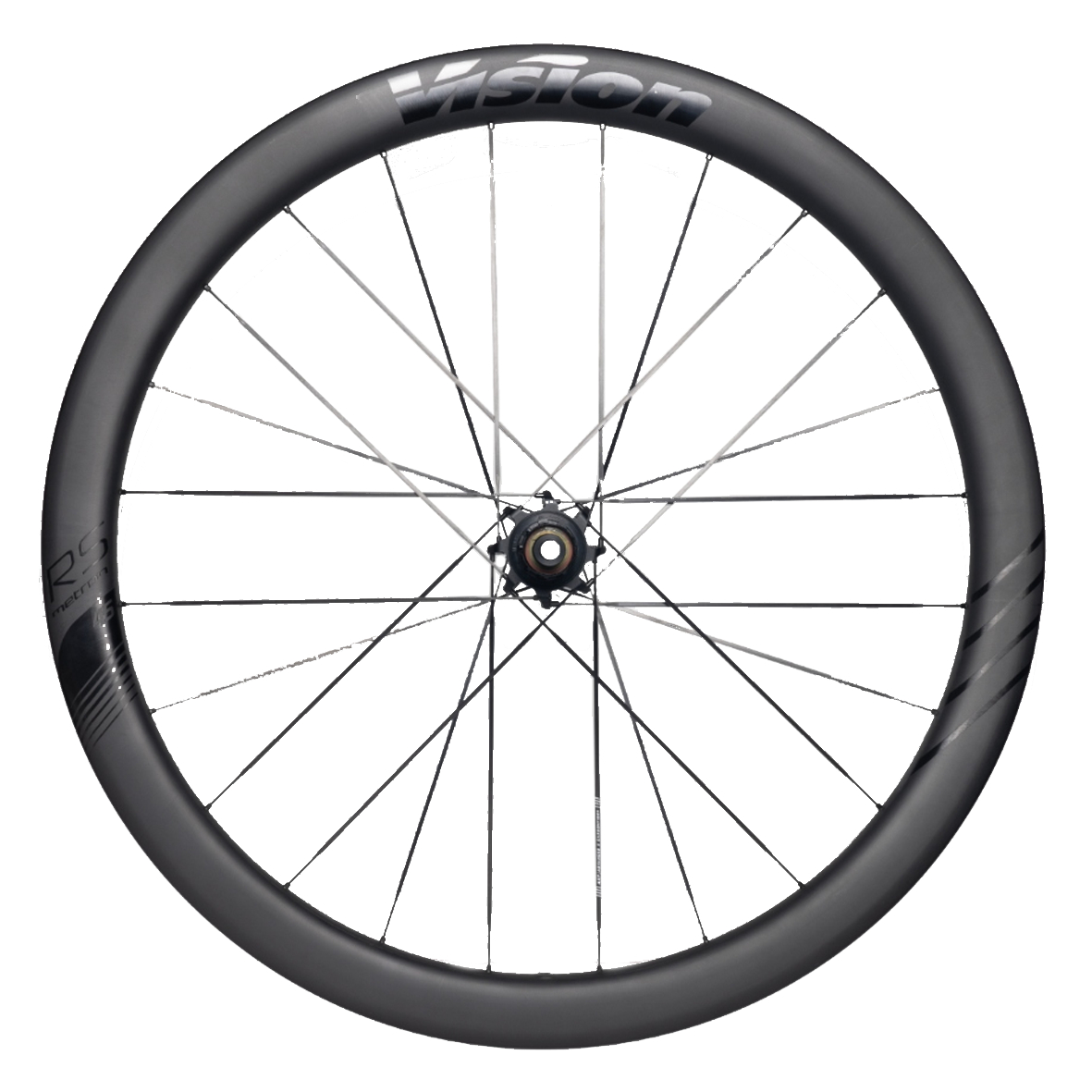
The Vision Metron RS 45 wheels are the most popular hoops in the pro peloton, and our tests would find that to be for good reason.
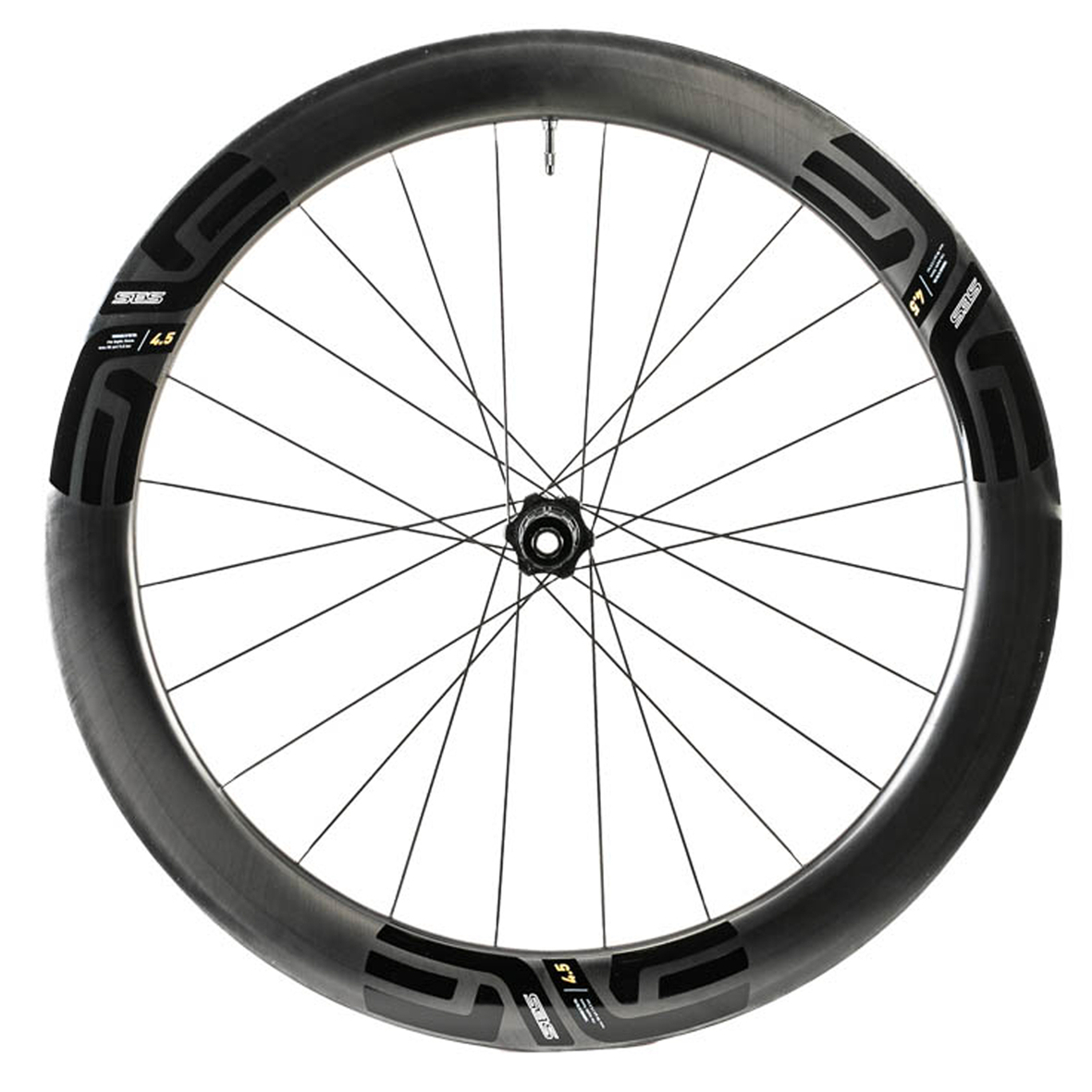
Enve brings versatility to the table with its SES 4.5 wheelset. They're light and aero-optimised at 32kph. They're also wide and hookless, stable when descending and comfortable.
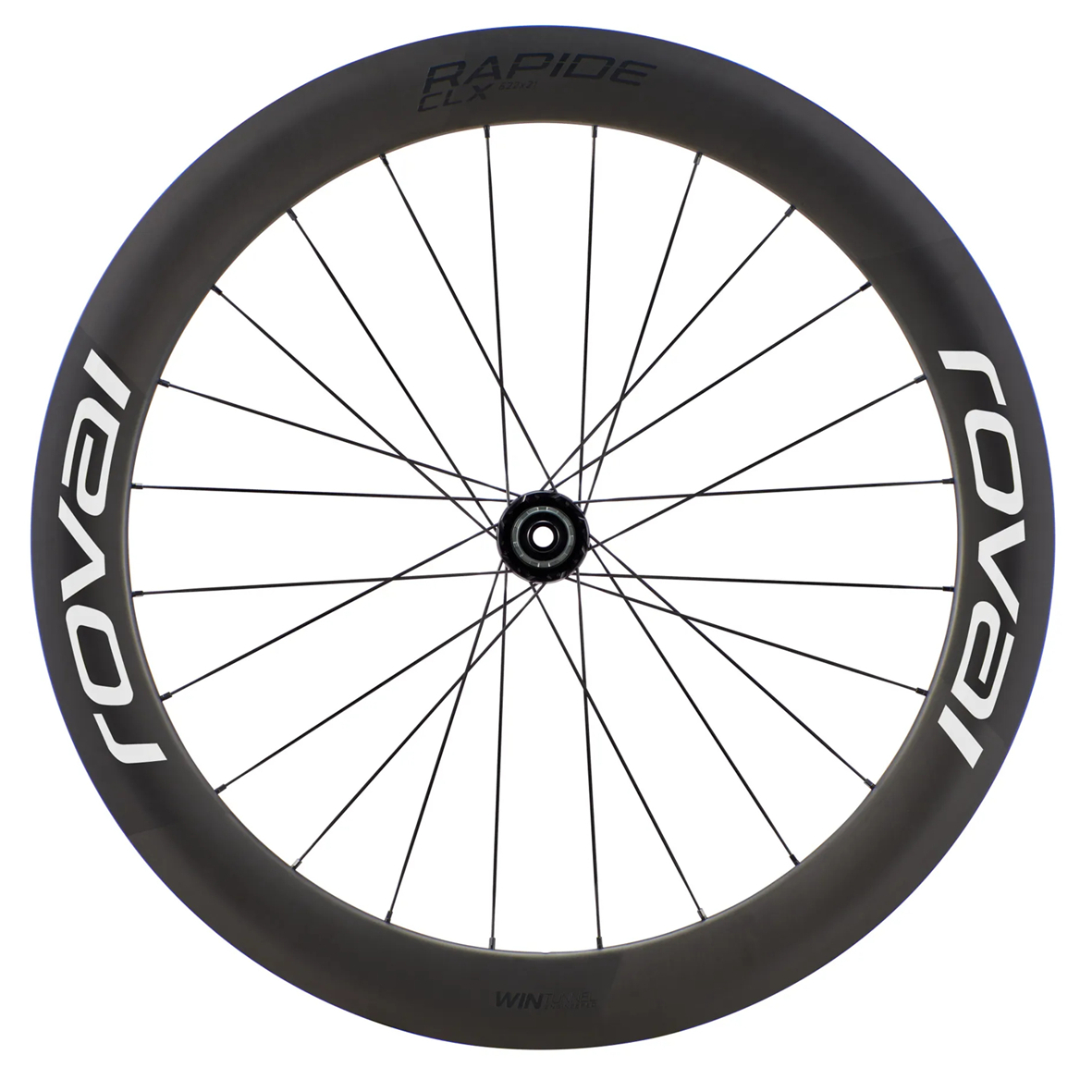
The Roval Rapide CLX II wheels feel fast and deliver a very comfortable ride feel.
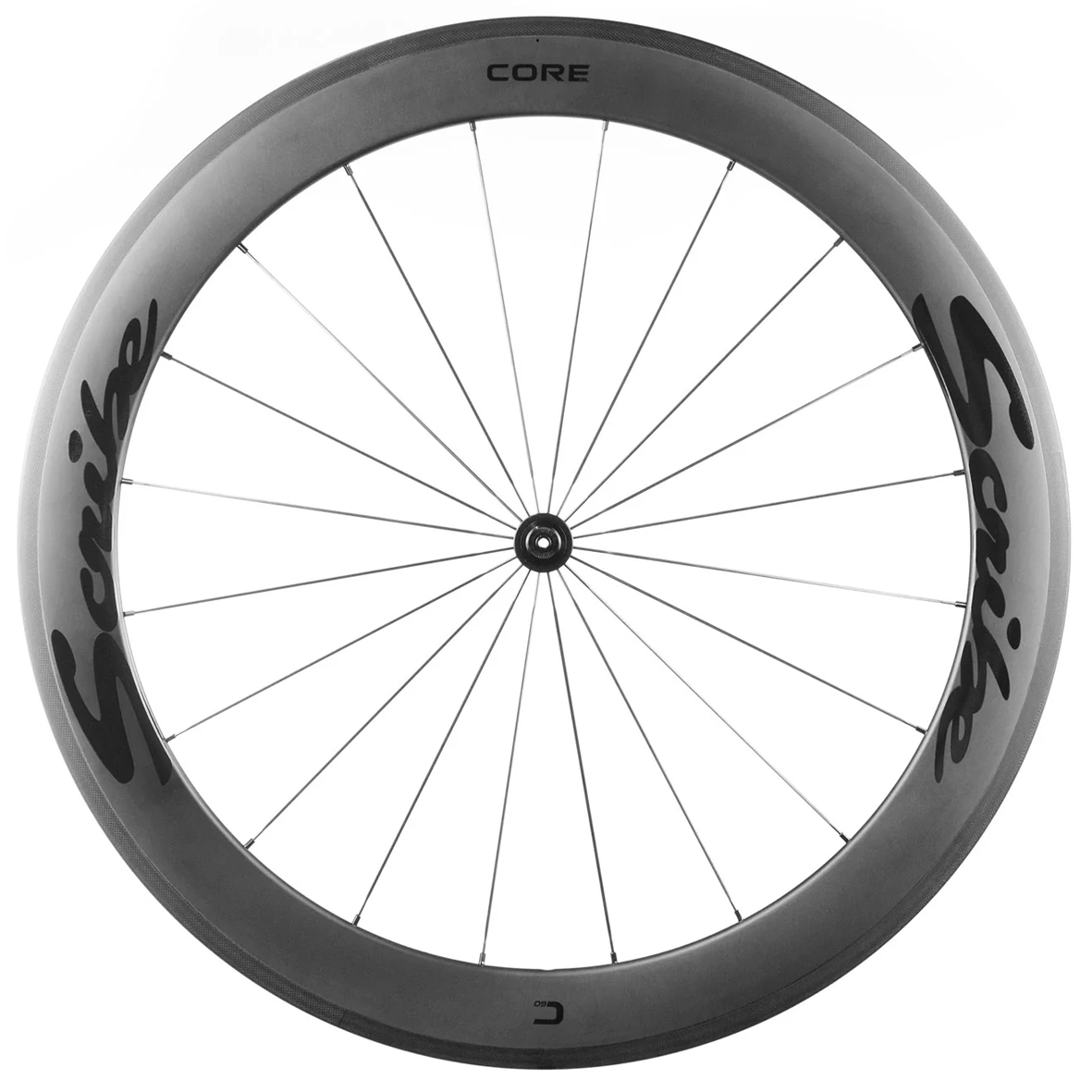
Scribe's Core Superlight 60 is an affordable carbon set of wheels that scored very well in our wind tunnel testing, beating considerably more expensive options in the process.
Last updated on 18th of September 2025
Products were all checked to ensure all wheels in the guide were still relevant and up to date. New products that have been recently reviewed have been added. The sidebar was updated to improve readability and navigation.
Best road bike wheels available today
You can trust Cyclingnews
Best road bike wheels
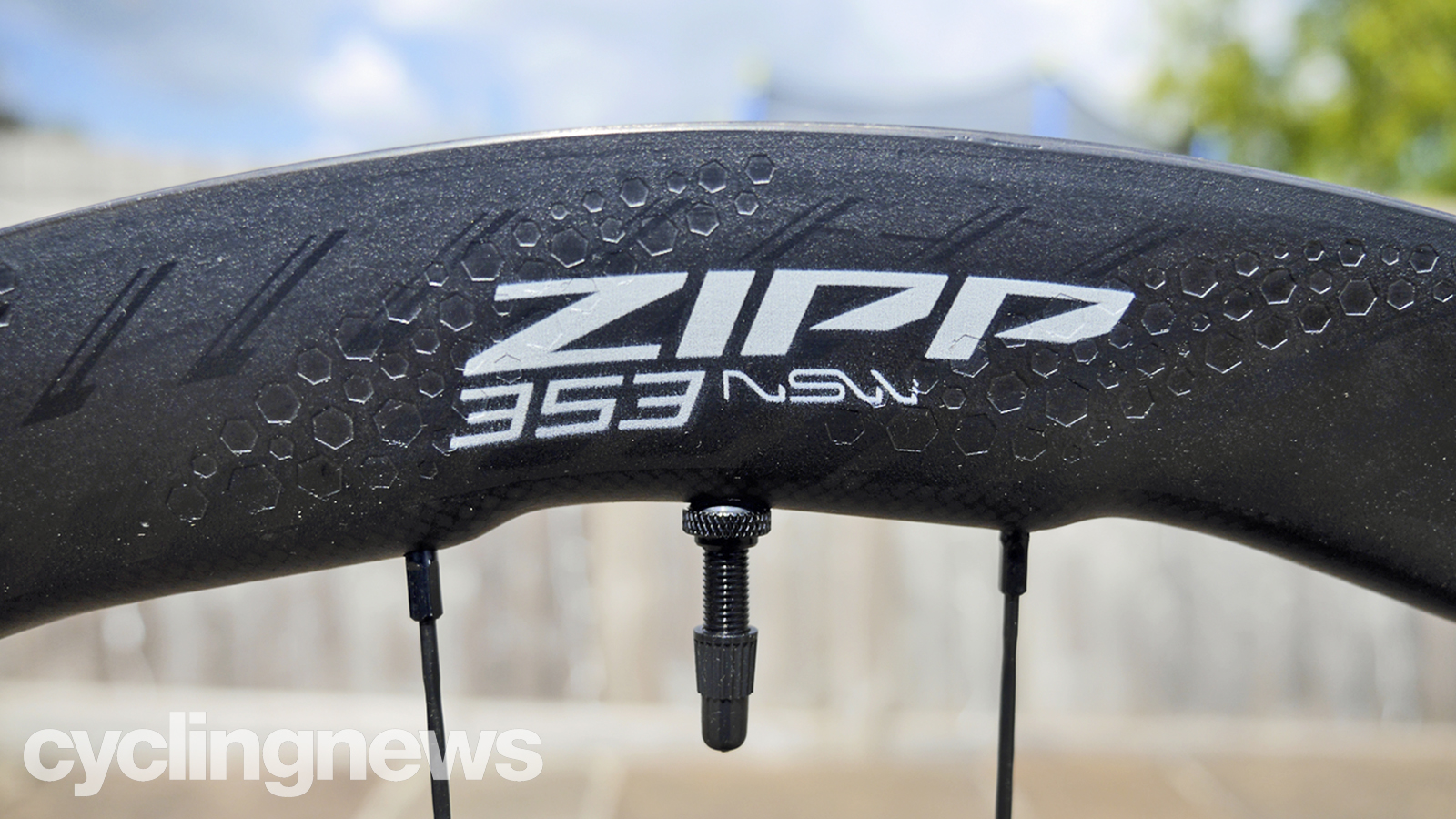
Specifications
Reasons to buy
Reasons to avoid
✅ You want ride comfort: The product offers exceptional ride comfort, which stands out compared to competitors.
✅ You want crosswind stability: The sawtooth profile handles crosswinds extremely well.
❌ You don't want limited tubeless tyre compatibility: The hookless beads and 25mm internal width restrict the number of compatible tubeless tyres.
Although the low weight and sawtooth profile grabbed headlines, it was the ride comfort on offer that stood out for us. The sawtooth profile is eye-catching and is designed so that with the wind straight on, the 353 NSW behaves like a 45mm depth wheel, while at greater yaw angles, it behaves like one that is shallower - clever.
With less material, it's also lighter and we weighed the wheelset at 1,307g with tape and valves. We rated the crosswind stability, which we found to be a notch above the competition. We also enjoyed the new, simpler hub design, with an elastomer spring that makes the 54-point of engagement freehub very quiet.
There are some compromises: the hookless beads and 25mm internal width mean that there is only a limited number of tubeless compatible tyres and there's also the high price tag. We've not wind tunnel tested these Zipp wheels either, so we can't quantify the aero benefits.
You might also be aware that we've opted for the old wheelset here, not the updated 353 NSW, which comes complete with a built-in pressure sensor. The reason for this is pretty simple - for most people, it's just not enough of an upgrade to justify the extra cash.
Read our full Zipp 353 NSW review for more details.
Best for aerodynamics
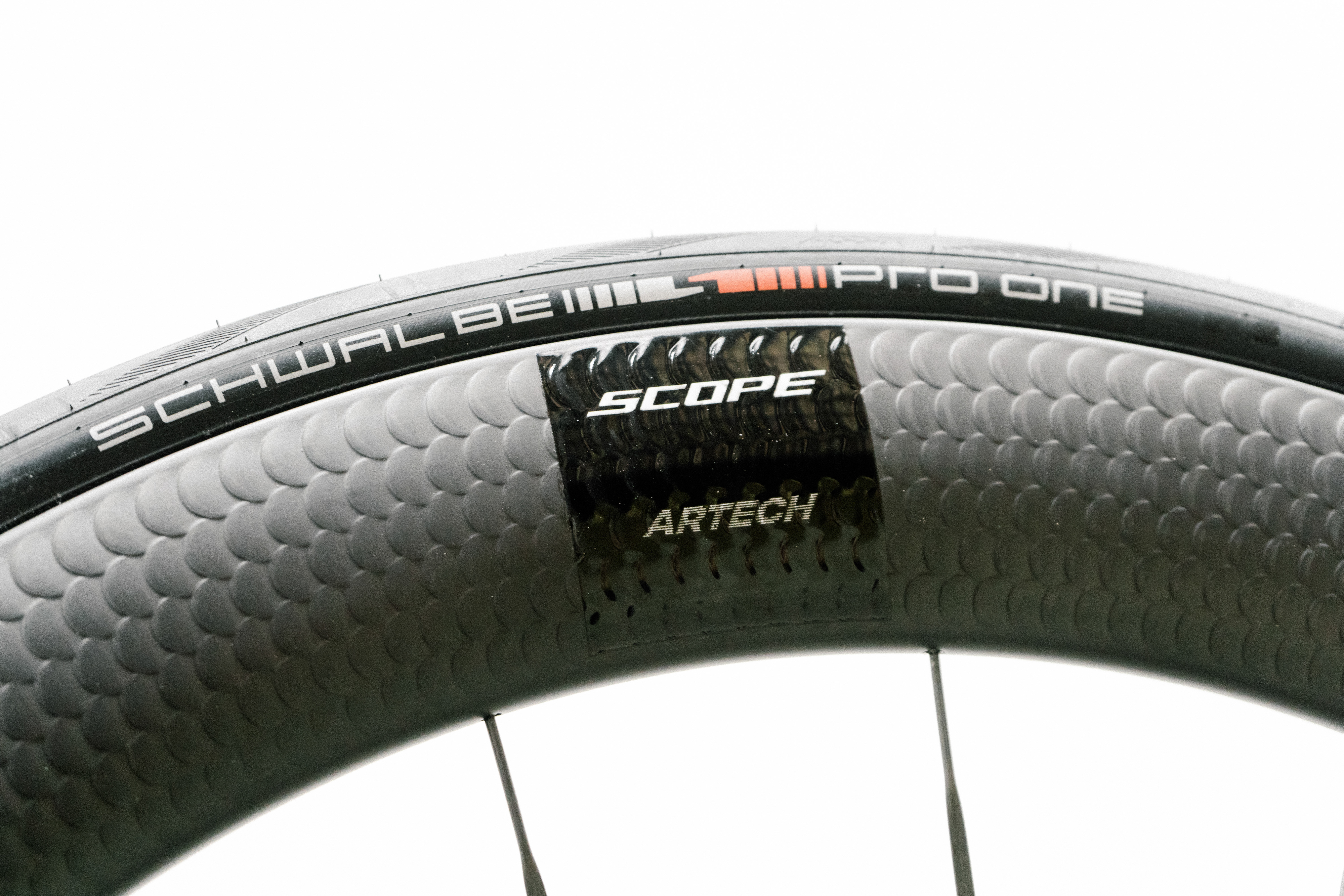
Specifications
Reasons to buy
Reasons to avoid
✅ You want great aero performance: The wheelset excels in aero-optimization, performing well at high yaw angles and across a range of speeds, making it ideal for both low and high-speed conditions.
✅ You want a lightweight deep-section wheel: At 1,280g for a wheelset, the 60mm deep Artech is impressively lightweight.
❌ You want a premium finish: The 3D printed alloy hub shells are prone to surface corrosion and the logos can chip off.
The Scope Artech wheelset was the lightest wheelset and also saved the most watts in our wind tunnel test: over 10 watts at 40km/h. They sail well at high yaw angles, as well as performing among the best across a range of speeds at lower angles and in a straight headwind.
Although we tested with 28mm tyres, the 6.A signifies Scope's all-road format, which Scope says is aero-optimised for 30mm width. In any case, our tyres measured up at 30.6mm on the 25mm internal width rims.
Weight reduction comes from low spoke count carbon spokes, as well as 3D printed alloy hub shells and a titanium ratchet freehub, although bearings are high-quality steel rather than ceramic.
All this tech does come with a hefty price tag, head over to our Scope Artech 6.A review to get the full picture.
Best race wheels
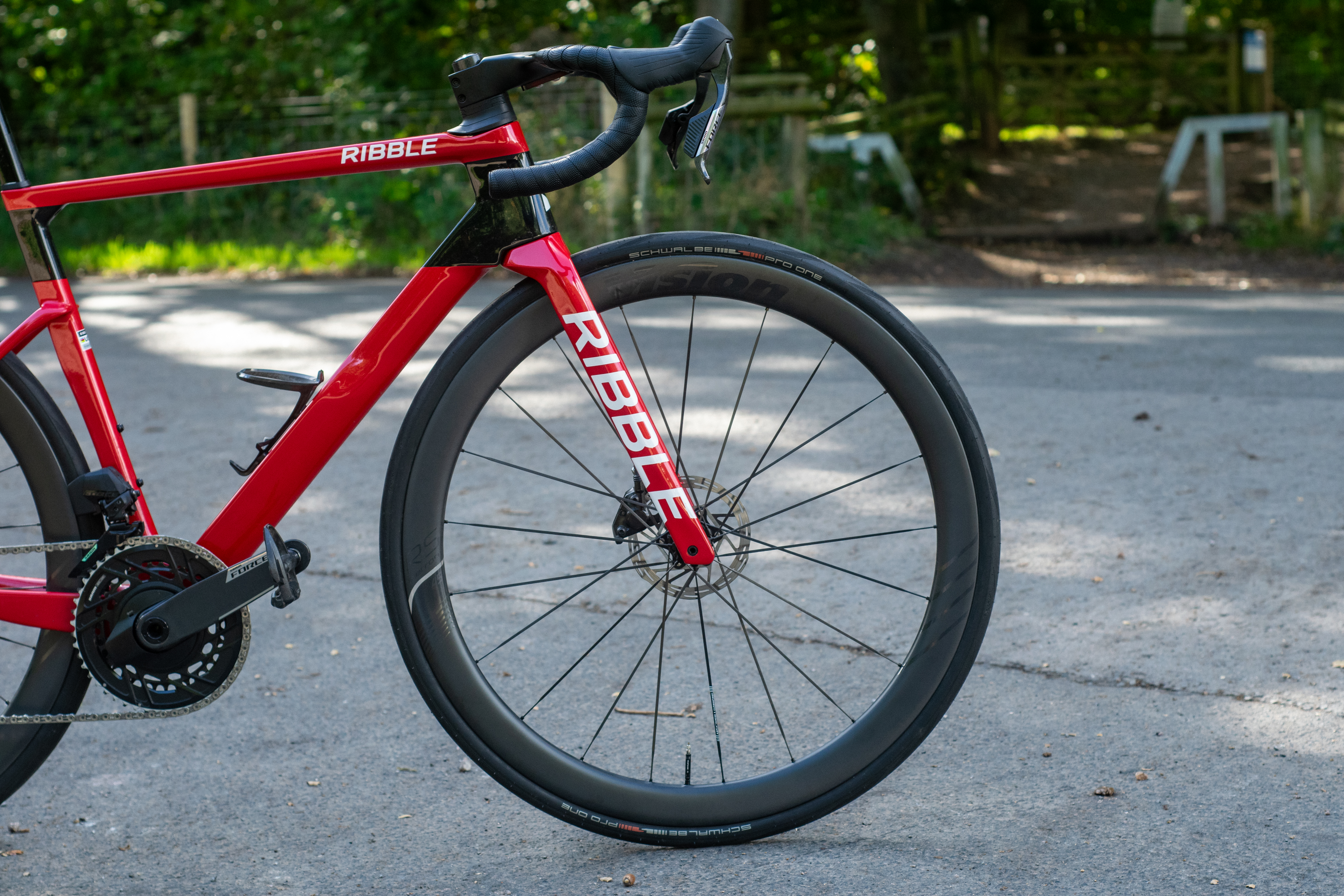
Specifications
Reasons to buy
Reasons to avoid
✅ You want a great all-round wheelset: Low weight, mid depth and fast, the Metron RS 45 wheelset is ideal for those who want a do it all set of hoops for racing.
✅ You want a hooked rim design: Hooked design is compatible with more tyre options.
❌ You don't want to spend much money: The Visions are not a cheap wheelset, even if they are very good.
The Vision Metron RS sits at the top of Vision’s lineup and has already proven itself in the WorldTour. At 1,265g for the 45mm version, it’s impressively light for a mid-depth aero wheelset, thanks in part to carbon spokes and a newly designed V-1000 hubset with a fast, smooth 72-tooth ratchet drive.
On the road, the RS feels lively and fast everywhere, with standout lateral stiffness that makes climbing, sprinting, and accelerating out of corners feel sharp and efficient. The hooked 23mm internal rims are optimised for 28mm+ tyres and eliminate compatibility headaches, while tubeless setup is simple and secure wwith a hooked rim. Handling is predictable and engaging, and the carbon-spoked construction gives the wheels a stiff, race-focused feel without compromising ride quality when paired with wider tyres at lower pressures.
At £3,109 / $3,290 / €3,109, they’re expensive but well-positioned against rivals like Zipp and Roval. For riders chasing WorldTour-level performance in a lightweight, modern package, the Metron RS offers a fast, stiff, and reliable option that delivers excitement every ride.
Best for versatility
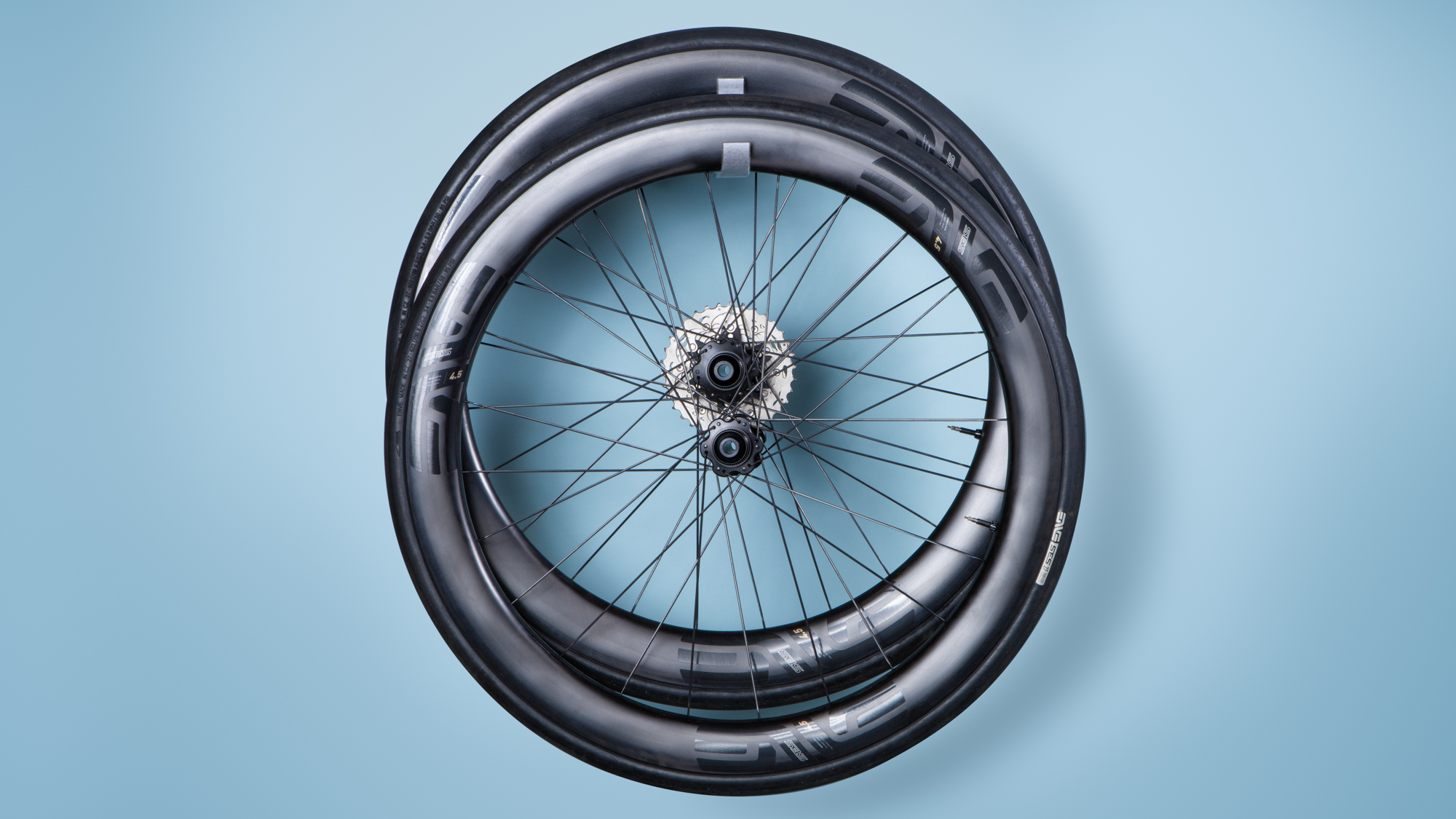
✅ You want everyday aero benefits: With aero optimisation at 32km/h, it offers performance gains at realistic speeds for most cyclists, not just professionals.
✅ You want versatility: The Enve SES 4.5 performs well across different terrains, from road to gravel, making it ideal for a variety of riding conditions.
Specifications
Reasons to buy
Reasons to avoid
❌ You don’t want hookless limitations: The use of hookless beads may limit compatible tyre choices and can be a drawback for some riders.
Enve pitches the SES 4.5 as the most versatile wheelset in its lineup, light but aero and with a 25mm internal rim width that adds a couple of millimetres to the tyre width, so that the 28mm Schwalbe tyres in our wind tunnel test actually measured 30.1mm.
Enve's aero rims are optimised at 32km/h rather than the more normal 45km/h, so their aero qualities are more geared to everyday riders than the pro peloton, despite their use by UAE Team Emirates.
The front wheel is lower profile than the rear, for greater crosswind stability and Enve uses hookless beads. The wide rims make for very stable descending and they're comfortable for the long ride; they can easily be set up with wide tyres for gravel riding too.
We tested the Enve SES 4.5 wheels as part of a three-way group test with wheels from Cadex and Roval and rated their versatility and ride quality.
Read more in our full review of the Enve SES 4.5 wheelset.
Best for comfort
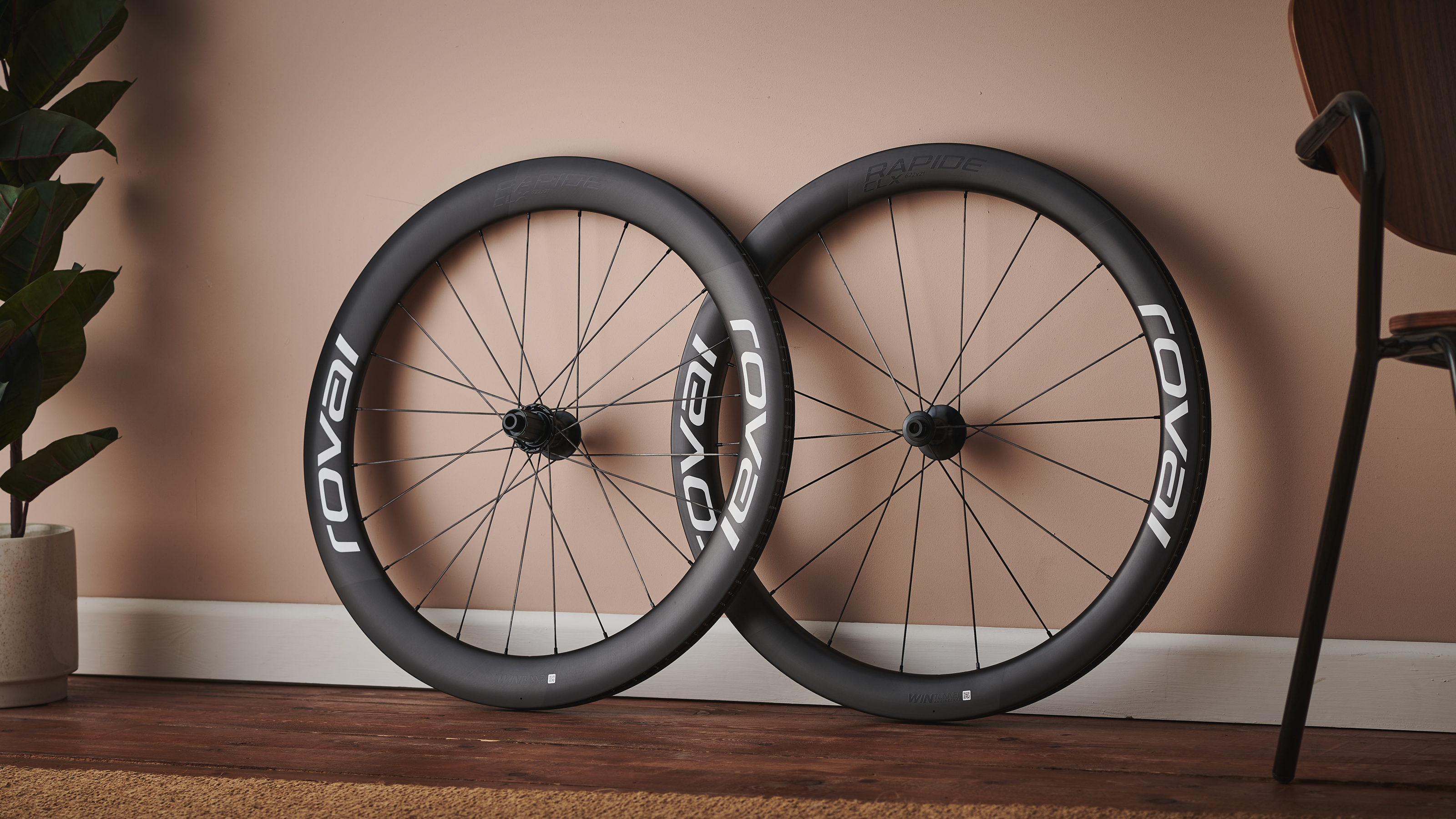
Specifications
Reasons to buy
Reasons to avoid
✅ You want a comfortable ride feel: They are some of the most comfortable road wheels we've ever ridden.
✅ You want a hooked rim design: Hooked design is compatible with more tyre options.
❌ You want the best aerodynamics: The Roval's didn't offer as much aero performance in our testing.
The original Roval Rapide wheels needed to be run with tubes, but version two has added tubeless compatibility. The wheels are wide, with an external width of 35mm front and 30mm rear, with differential 51mm and 60mm rim depths and different rim profiles. The front is designed for stability and the rear for aerodynamics and power delivery. In the aero hubs are ceramic bearings and a DT Swiss Ratchet EXP freehub.
We rated the Roval Rapide CLX II wheels both fast and comfortable when we tested them as part of a three-way test with Cadex 50 Ultra and Enve SES 4.5 wheels. The hooked bead ensures wide tyre compatibility for tubeless running too. In fact, when Josh Ross tested these wheels, he found them to be some of the most comfortable road wheels he's ever ridden.
Our latest wind tunnel test was of the Roval Rapide CL II, which shares the same rim, but with lower-priced hubs and spokes and a slight weight increase to 1585g. Our results showed a saving of over 7 watts at 40km/h versus our reference wheelset, although Specialized says that this doesn't align with its own results.
Read our full review of the Roval Rapide CLX II wheelset for more details and ride impressions.
Best budget road wheels
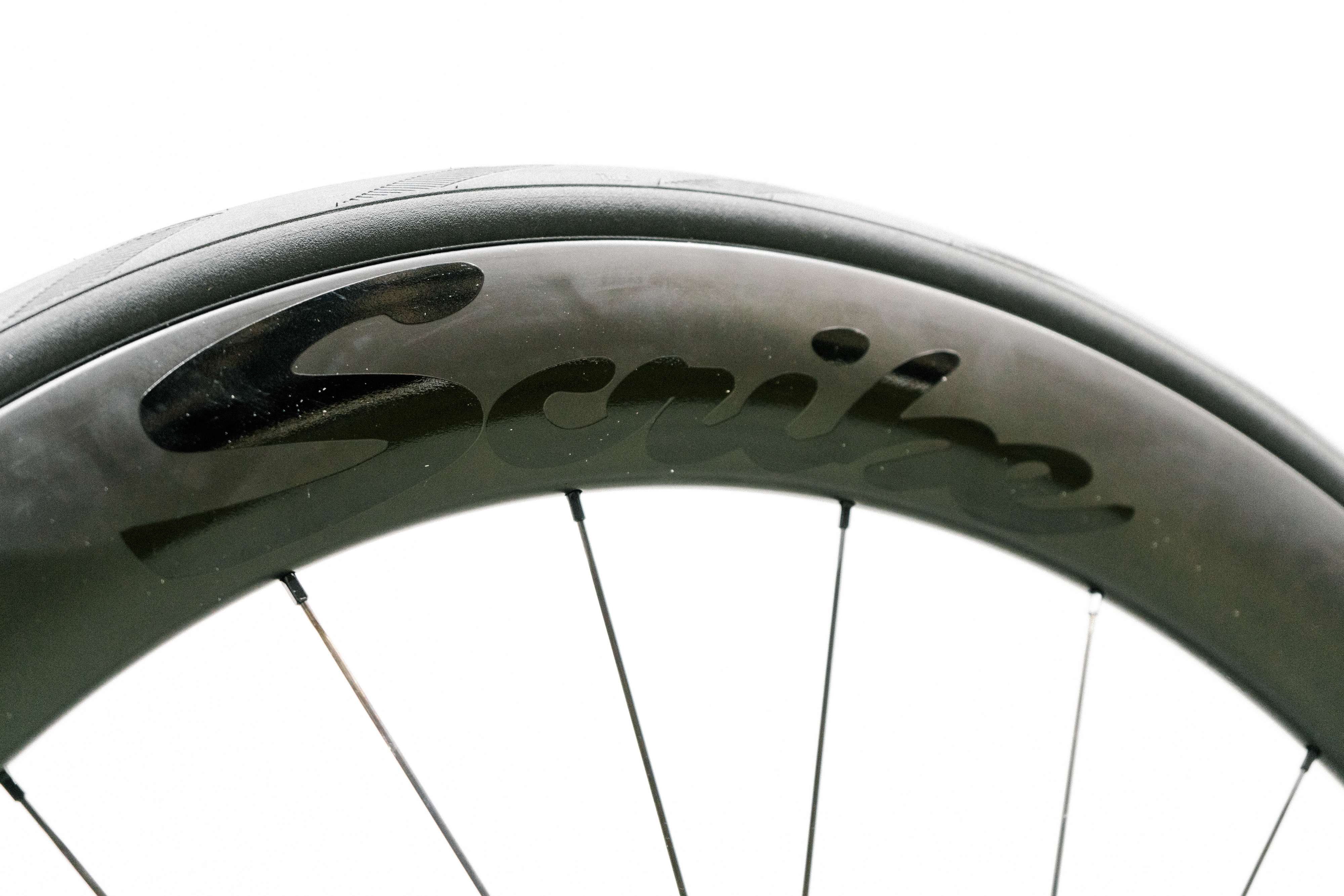
Specifications
Reasons to buy
Reasons to avoid
✅ You want great performance: The Scribe wheels outperformed most competitors in wind tunnel tests and saved over 9 watts at 40km/h, making them highly aerodynamic.
✅ You want solid aftermarket support: Scribe offers a lifetime crash replacement, a three-year warranty, and a trade-in scheme, providing excellent post-purchase support.
❌ You want to run wide tyres: The 21mm internal rim width is on the narrow side by modern standards, which might limit optimal tire performance for some users.
They may not have the cachet of some other brands' offerings, but the sub-£1,000 Scribe wheels bettered most in our wind tunnel tests and, at 1442g many on weight as well.
The 21mm internal rim width is quite conservative too, although our 28mm test tyres did measure up at closer to 29mm. There was a saving of over 9 watts at 40km/h versus our Fulcrum 5 reference wheelset, placing the Scribes on the aero podium.
Scribe backs its wheels up with a lifetime crash replacement scheme, a three-year warranty and a trade-in scheme. It's also one of the few brands to offer a rim brake as well as a disc brake option.
Beyond our wind tunnel work, we've not yet reviewed the Scribe Core Superlight wheels, but we've road-tested the brand's predecessor wheels of the same depth, you can read about those in our Scribe Aero Wide+ 60D wheels review to get the full picture.
Best budget race wheels
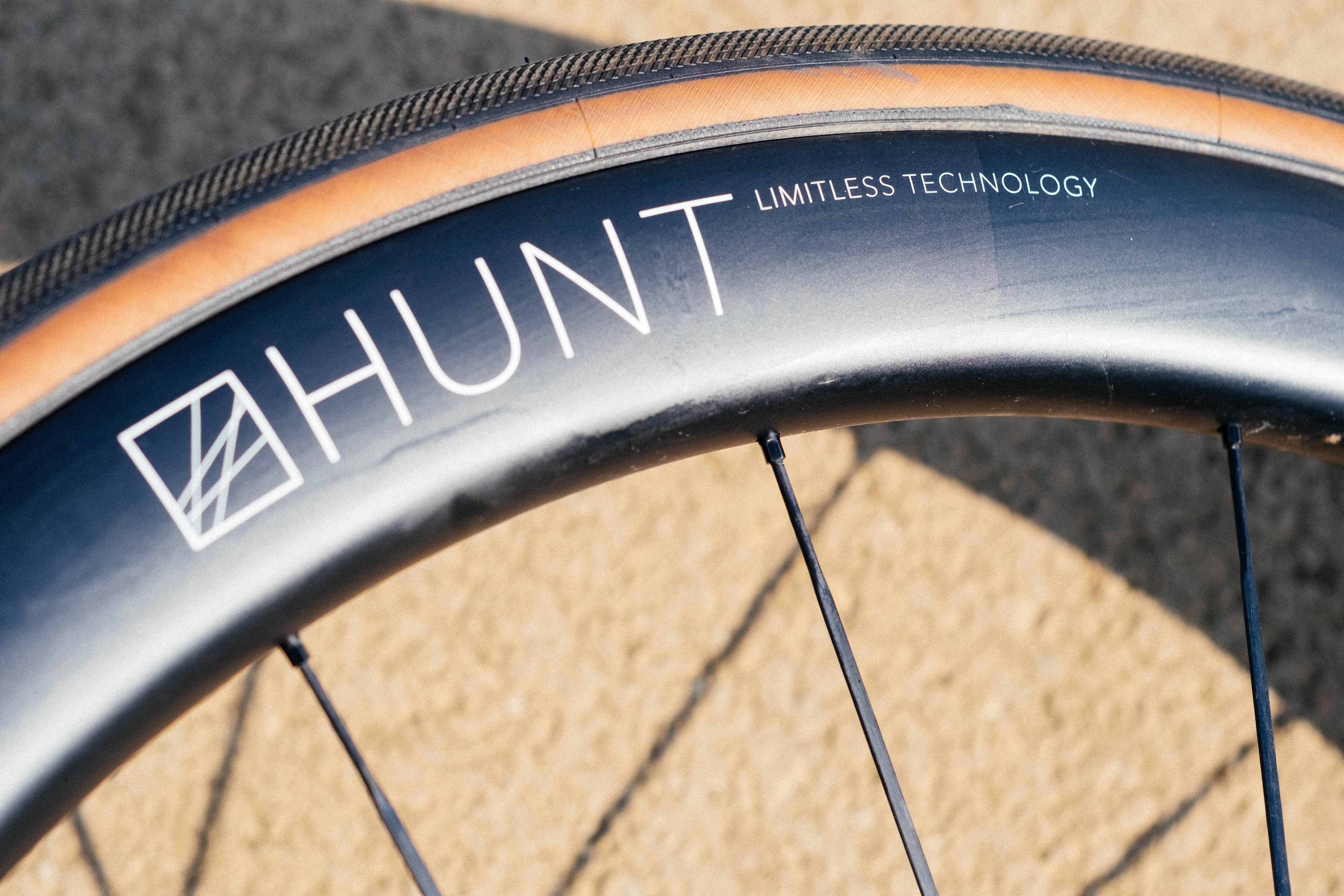
Specifications
Reasons to buy
Reasons to avoid
✅ You want a top spec yet affordable wheelset: The Sub50 are competitively priced and can be upgraded to carbon spokes and ceramic bearings for extra performance.
✅ You want lightweight performance: The Sub50 is a great option for riders focused on reducing weight while maintaining aero performance.
❌ You don’t want potential limitations from hookless rims: While they improve comfort and volume, hookless rims may limit tyre compatibility for some riders.
❌ You want the best descending stability: The Sub50 can't quite match the most stable 50mm deep wheels on descents.
The Hunt Sub50 Limitless Aero Disc is Hunt’s latest move to show they can hang with the big names in the wheel game. It’s a lightweight, aero-focused wheelset that’s built with everyday riders in mind—but with plenty of high-end tech, including carbon spokes and CeramicSpeed bearings upgrades if you want to save weight and reduce rolling resistance.
In our wind tunnel test, the Hunt Sub50 wheels saved over 8 watts at 40km/h and scored well for efficiency at both higher and lower speeds, unlike some other wheels tested.
Not only does the 49.5mm rim depth cut through the air efficiently, but the rims also have a 34.2mm external, 23mm internal width that is perfect for modern 28–30mm tires, giving you more comfort and better aero without the weight penalty.
On the road, the Sub50's feel super light and quick to accelerate, especially if you opt for the carbon spokes and ceramic bearings. They’re comfy over long distances and handle wider road tyres well, adding extra tyre volume and ride comfort. There's not quite the stability when descending that the 60mm depth offers though.
Read our full review of the Hunt Sub50 Limitless Aero Disc wheelset for more details.
Best money no object wheels
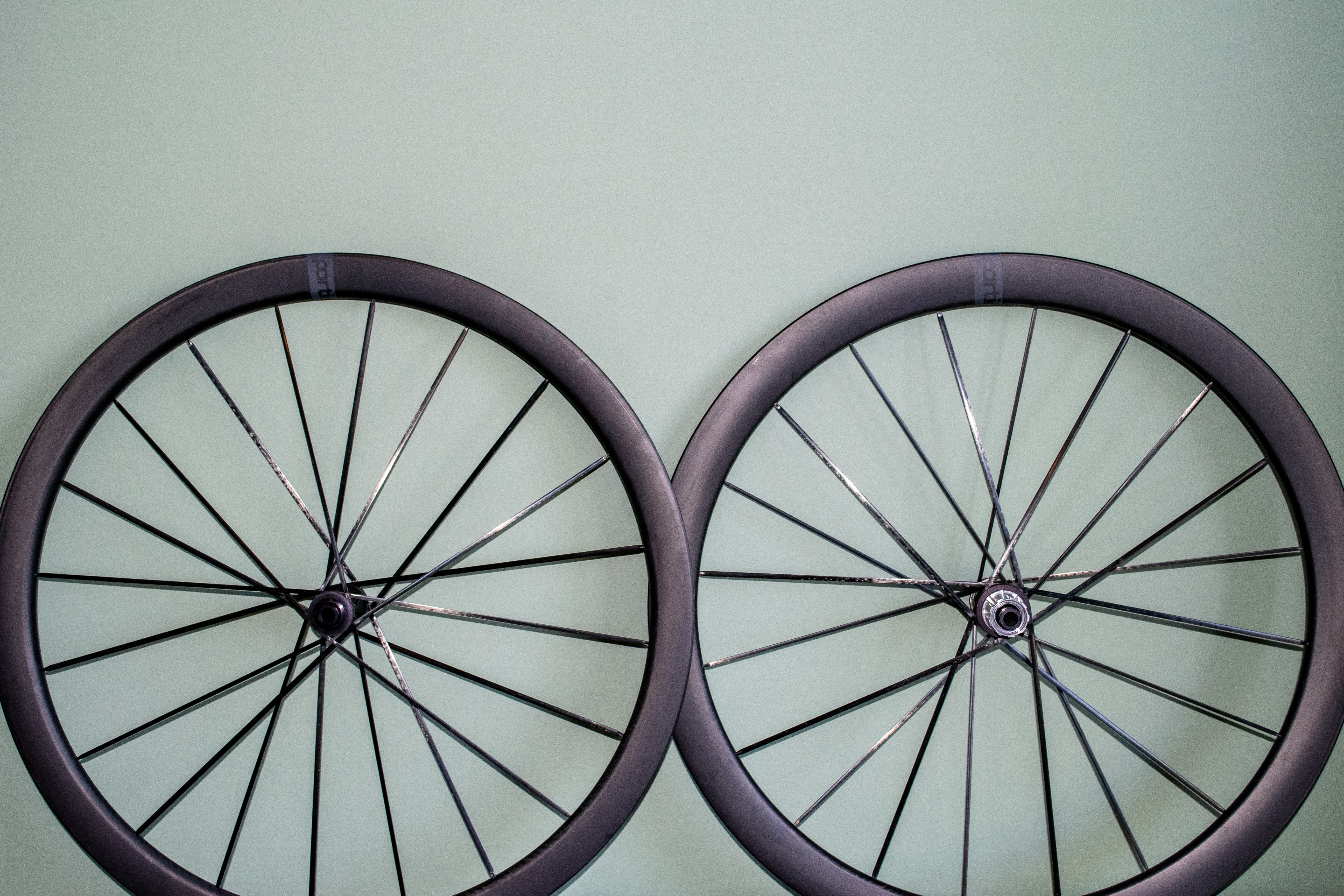
Specifications
Reasons to buy
Reasons to avoid
✅ You want a fast feeling wheelset: The wheels are undeniably stiff and weigh just 1173g, giving them an exceptionally fast feel.
❌ You don't want to spend loads of money: These wheels cost over 5 grand - for many people that might be more than the bike they would be fitted to.
The Partington R-Series MKII R39/44 wheels are a rarefied product - ultra-light, incredibly stiff, and engineered with a no-compromise approach. At just 1,173g, they’re among the lightest disc clinchers available, built in Victoria, Australia with carbon rims, carbon hub shells, bonded carbon spokes, and premium CeramicSpeed bearings.
Ride quality is outstanding. The wheels feel responsive and lively, with rapid acceleration on climbs and a sensation of always riding on good legs. Stiffness is noticeable without harshness, and handling remains sharp and predictable even in crosswinds.
Practical details also impress too, with tubeless setup being the easiest many testers have experienced, requiring no tape thanks to the sealed rim bed. The hubs are exceptionally smooth, thanks to Partington’s unique 'dynamic bearing architecture,' which avoids excessive pre-load for freer spinning and longer bearing life. Maintenance is straightforward, with easily swappable freehub bodies and serviceable bearings.
The only drawback is the price - £5,499 / $6,400, putting them firmly at the top end of the market alongside Lightweight and Princeton Carbonworks. For most riders, they’ll remain aspirational. But for those who can afford them, the Partington R-Series MKII delivers a blend of weight, stiffness, and refinement that few rivals can match.
Read more in our Partington R-Series MKII review.
Also consider
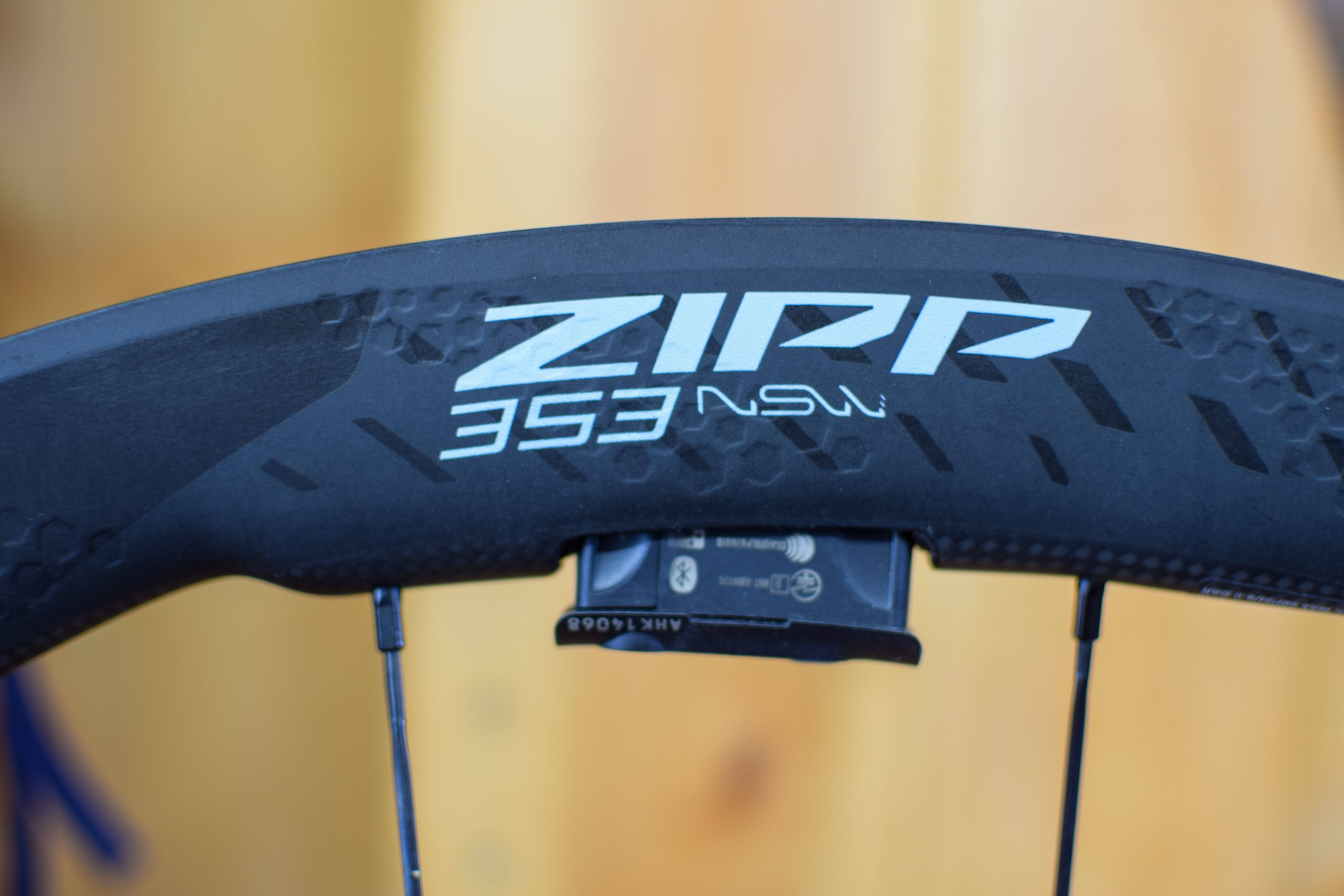
9. Zipp 353 NSW 2025
Specifications
✅ You value having more data when you ride: There are plenty of people who think the seemingly incessant need for more technology when we ride is going a bit too far, but that ideology certainly isn't everyone. Having more data when it comes to tyre pressures can be useful, whether it's for monitoring tubeless setups or keeping tabs on slow punctures during a ride.
❌ You aren't a data lover: For many, the added price, complexity, and chance for more battery anxiety on your bike just isn't worth the hassle on the new 353 NSW wheels, and that's fine! The outgoing wheelset sits high on our list for a reason, for many people, they are the better all-round choice.
This year SRAM released the all-new Zipp 353 NSW wheelset, complete with a tyre pressure monitoring system that can feed live pressure data to your head unit or be reviewed post-ride. Though for many people this feature just isn't quite enough to justify the added cost, the updated 353 NSW's are still a great set of hoops, and well worth considering if you are a data lover, and willing to fork out the extra cash.
The Zipp 353 NSW carries over much of its predecessor’s DNA, with the familiar sawtooth rim profile, aero dimpling, and 25mm internal hookless width. Updates include a revised carbon layup for greater impact strength and the new ZR1 SL hubset with ceramic bearings, shaving weight and improving serviceability over the older Cognition design. Despite sticking with steel spokes and external nipples, weight remains competitive and maintenance is straightforward.
On the road, the 353 NSW feels versatile and easy to live with - light, predictable, and capable across climbs, descents, and long rides. They aren’t the most thrilling wheels, lacking the wow factor of deeper aero sets.
At £3,500 / $4,300, these are Zipp’s priciest road wheels. They’re refined, dependable, and the pressure-sensing tech is genuinely useful, but riders chasing outright speed or better value may find more compelling alternatives.
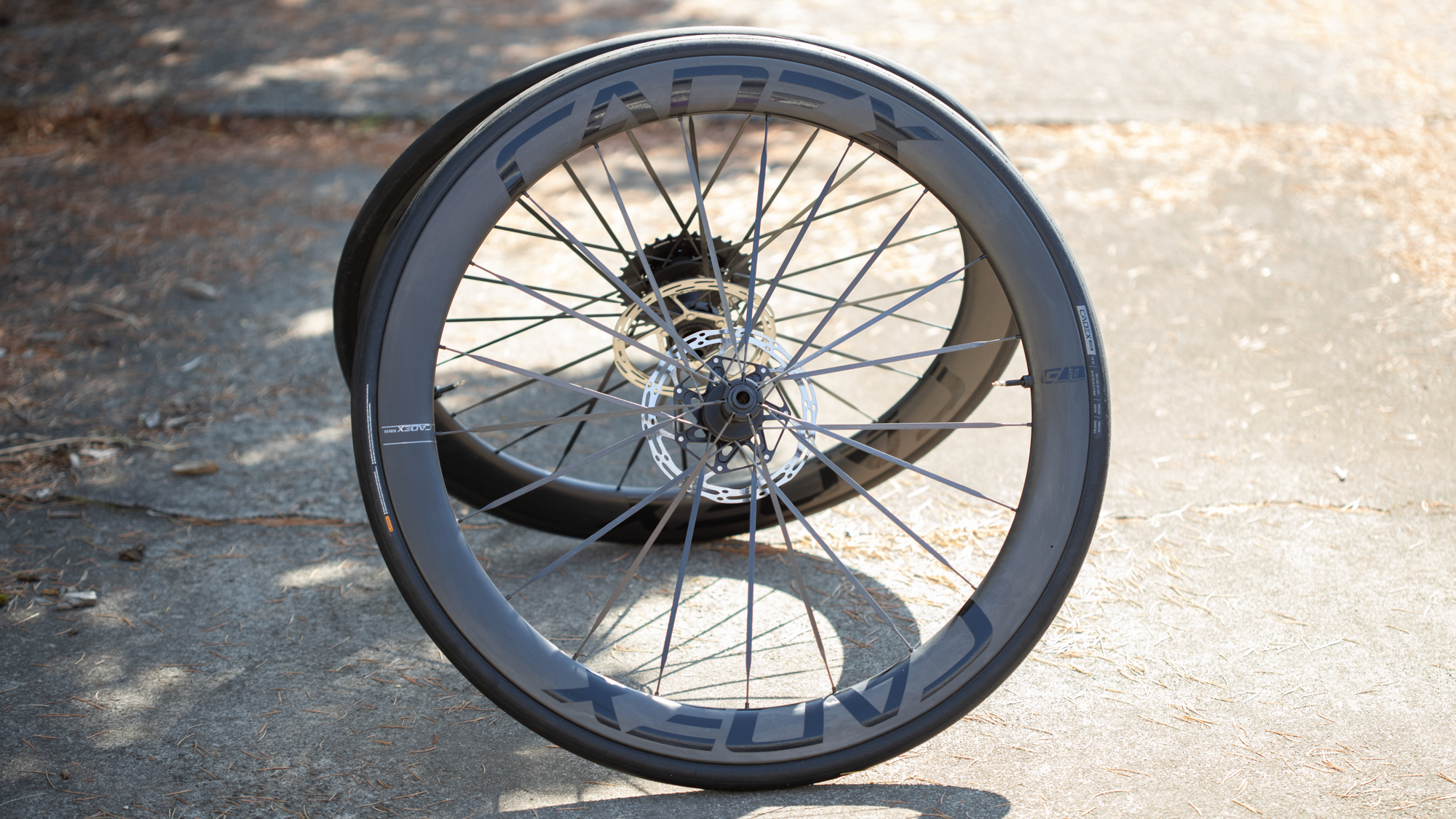
Specifications
Reasons to buy
Reasons to avoid
✅ You want an optimised rim and tyre combination: Cadex designed the rim and tyre in conduction to maximise aeroperformance performance.
✅ You want lightweight performance: The Cadex 50 Ultra Disc wheels weigh only 1,413g, placing them among the best lightweight wheels without sacrificing depth.
❌ You want consistent aerodynamics: The wheels perform better with 25mm tyres, but when used with 28mm Schwalbe tyres, their aero efficiency isn't as impressive, which could limit their versatility.
The 1,316g weight of the Cadex 50 Ultra Disc wheels puts them in the realm of the best lightweight wheels, but without excessive depth. They come with an aero hub with 40 points of engagement that's connected to the hookless rim using 5.2mm wide carbon spokes with an aero blade profile. The wheels are stiff, so you get good reactivity, but they're also comfortable and stable.
The 50 Ultra Disc wheels are designed to work as a system with Cadex's matching tyres, which have a profile tuned to up the combination's aerodynamics, although they're optimised for 25mm wide tyres, which is now a little narrow.
In our wind tunnel tests with 28mm Schwalbe tyres, they performed mid-pack, saving around 8 watts at 40km/h versus our Fulcrum Racing 5 baseline, although the more comprehensive testing by Giant, Cadex's parent company, suggests better performance with a range of 25mm tyres.
Cadex has a battery of tests to back up its aero claims for the 50 Ultra wheels, which you can read about in our review. We also put them in a three-way test with Enve and Roval wheels, where their weight and stiffness shone forth.
Our Cadex 50 Ultra Disc wheelset review should clear up any questions you have about these hoops.
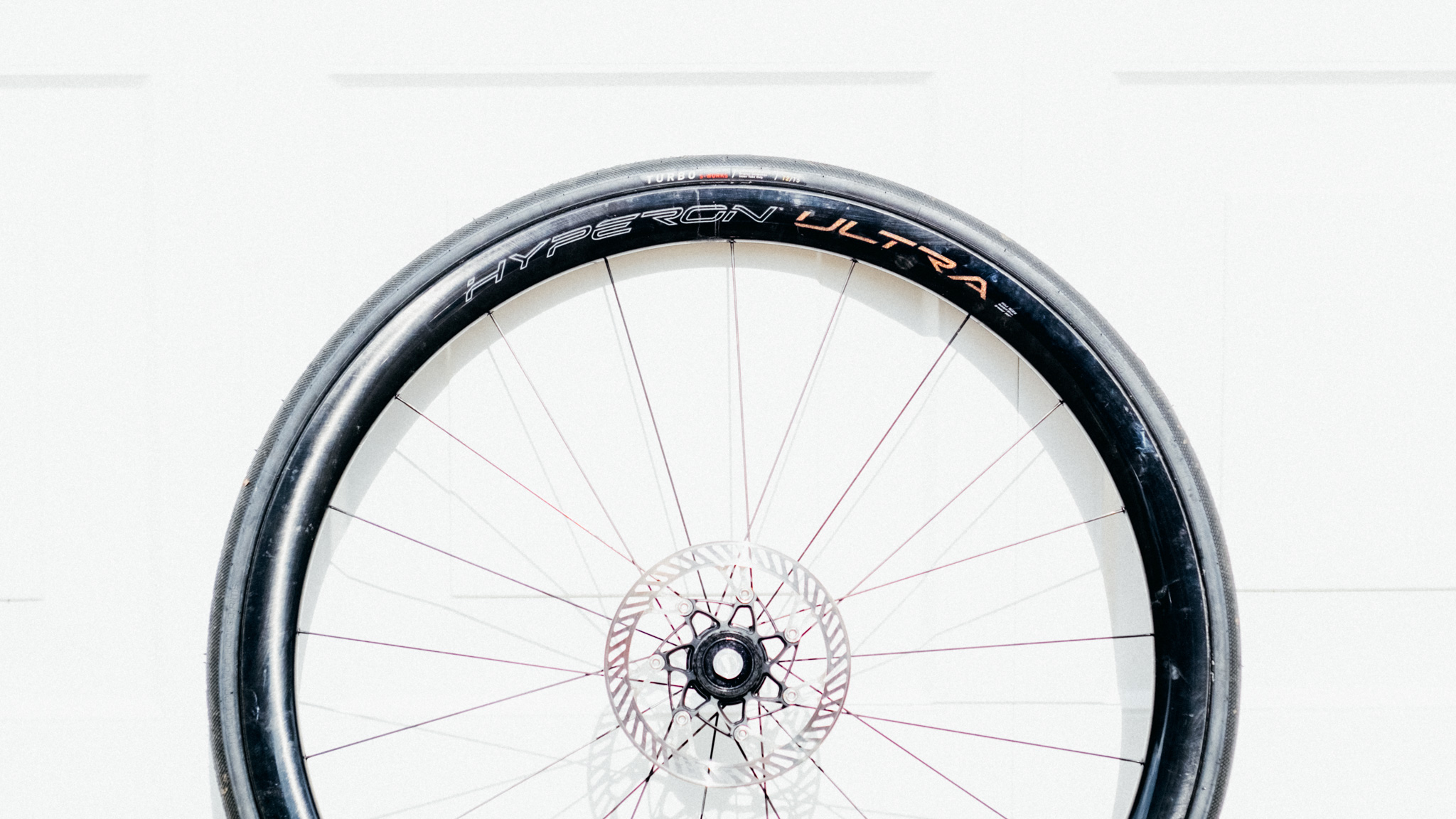
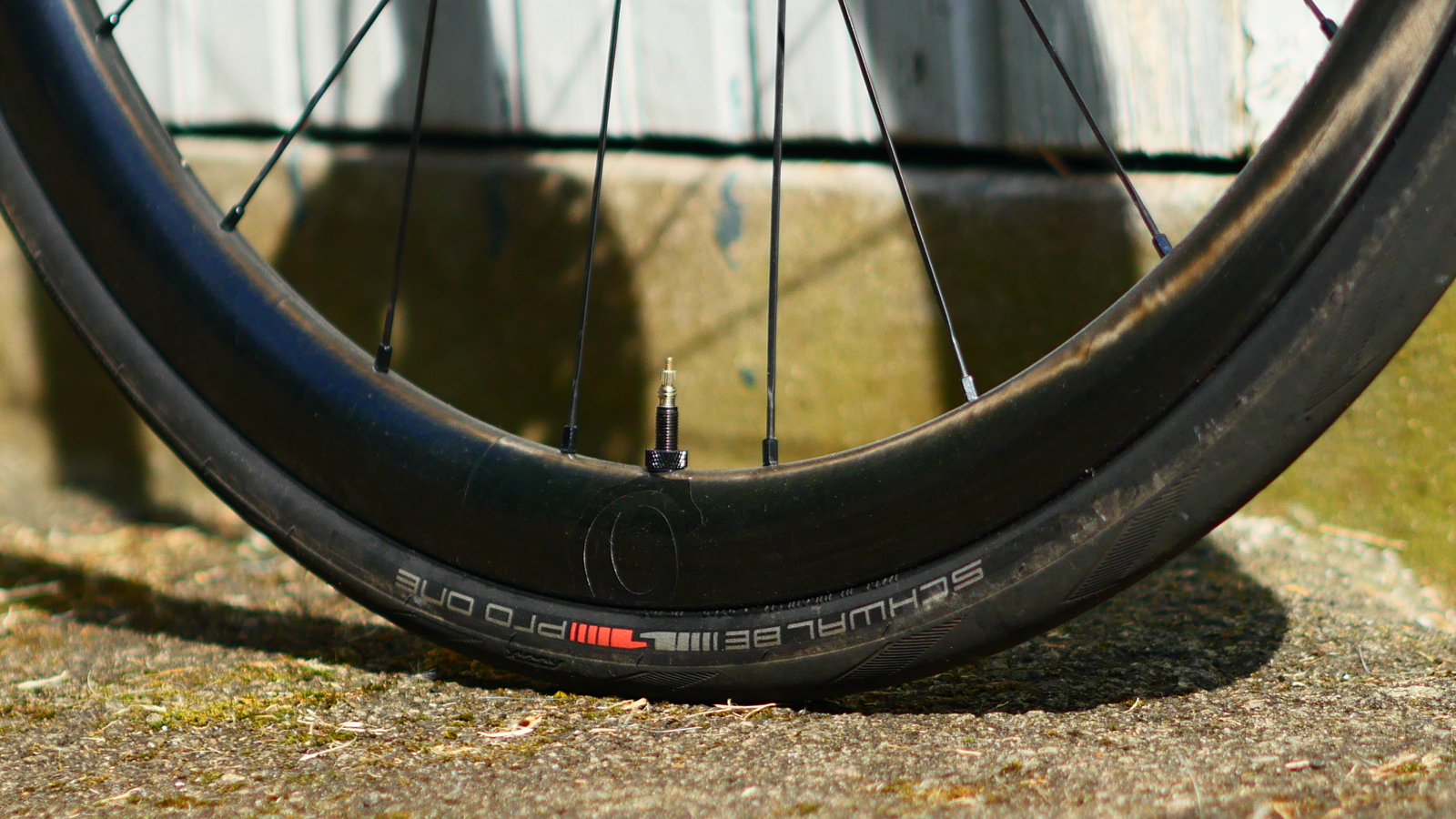
Specifications
Reasons to buy
Reasons to avoid
✅ You value quick freehub engagement: With 605 points of engagement, the Industry Nine whelset provides a fantastic, responsive ride quality which rivals struggle to compete with.
❌ You tend to opt for wider tyres: With an internal rim width of just 21mm, these wheels won't be so well suited to tyre widths over 28mm, so if you like wide tyres, these wheels most likely aren't for you.
The Industry Nine SOLiX SL 35c is an engaging, lively wheelset that stands out for its near-instant freehub engagement, silky bearings, and addictive freewheel buzz. Built around the SOLiX hubset, it delivers a staggering 605 points of engagement - 0.59 degrees before the hub drives - putting it well ahead of competitors like Zipp, Hunt, or DT Swiss. The result is a snappy, responsive ride that makes every pedal stroke feel immediate.
The 35mm carbon rims balance stiffness and comfort well, giving precise handling on climbs and descents. At 1,372g for the set, the weight is competitive, and the tubeless setup is straightforward thanks to the hooked rim profile. The smoothness of the bearings and refined hub design give the wheels a premium ride quality, with the signature Industry Nine buzz adding to the overall experience. Custom hub colours and ceramic bearing upgrades further add to the boutique appeal.
That said, the 21mm internal rim feels narrow by modern standards and limits tyre versatility, with 28mm options working best. Riders who want to run 30mm+ rubber or prioritise aero gains will find deeper, wider wheels a better match. Similarly, those chasing raw performance or maximum value may be better served elsewhere, as the $2,225 / €1,960 price tag positions these against faster, more aerodynamic rivals.
Ultimately, the SOLiX SL 35c isn’t the outright fastest or most versatile option, but as a high-quality, responsive, and fun-to-ride wheelset, it offers a unique blend of refinement and character few others can match.
Read more in our full Industry Nine SOLiX SL 35c review to find out more.
Specifications
Reasons to buy
Reasons to avoid
✅ You value exceptional handling: They ride like shallower wheels, delivering sharp, agile, and responsive cornering, especially on descents.
✅ You want premium aesthetics: The high-gloss finish, seamless unidirectional carbon, and subtle Italian styling make them a visual standout.
❌ You prioritise measurable aerodynamic performance: There are no concrete aero claims or data to support speed gains, which is unusual for a wheelset in this price range.
❌ You want maximum comfort on rough roads: Their stiffness, while aiding performance, can lead to a harsh ride over uneven or poor surfaces.
Claimed to be an all-rounder wheelset, the Campagnolo Hyperon Ultras aim to balance aerodynamics, weight and handling. They look great too, with a luxurious gloss rim finish, seamless-looking unidirectional fibres and classy graphics.
We lamented the lack of any aero claims or hard numbers, although, in fairness, these are easily manipulated and every brand claims that its wheels are the fastest. At 1,240g a pair, the wheels are impressively lightweight though.
Handling feels more akin to a much shallower wheelset and the Hyperon Ultras are taut and stiff with low inertia. That tautness does detract from ride comfort a little, with a skittish ride on poor surfaces. They don't lack durability, holding up absolutely fine during our testing and the cobbled streets of Bristol left no chipping, no denting, and they were still straight as an arrow afterwards.
Read our full review of the Campagnolo Hyperon Ultra wheelset for our full ride impressions.
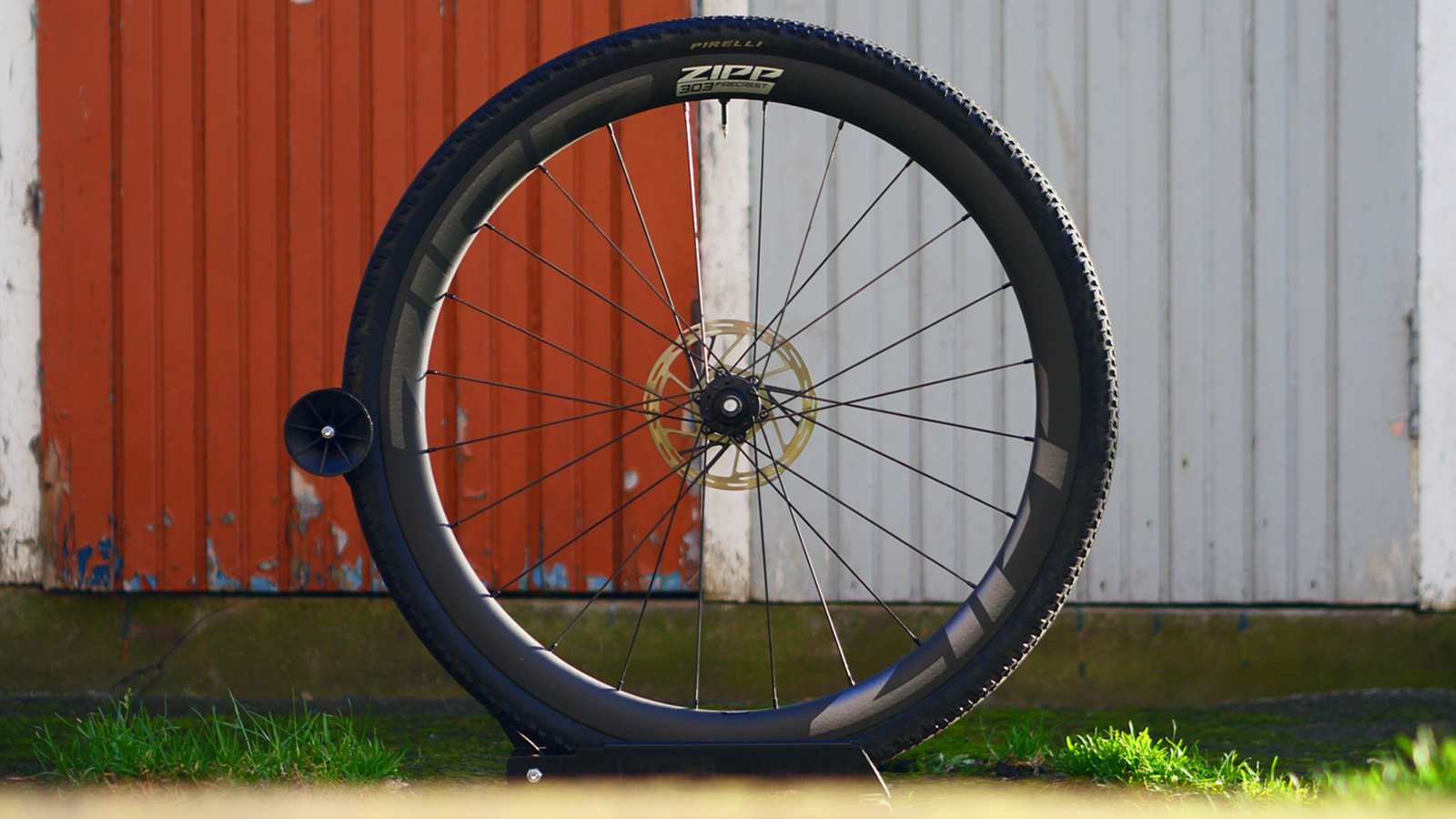
Specifications
Reasons to buy
Reasons to avoid
✅ You want razor-sharp handling and smoothness: The Zipp 303 Firecrest wheels deliver excellent on-road control and a smooth ride, making them ideal for high-performance cycling.
✅ You want lightweight strength: At just 1,410 grams, they offer an impressive combination of low weight and strong impact resistance, great for all-road adventures.
❌ You don’t want tyre limitations: These wheels are only compatible with 28mm+ hookless tyres, restricting your choice—especially with brands like Continental.
Pushing the boundary of road wheels, Zipp's 303 Firecrest offers phenomenal performance both on and off-road.
They offer razor-sharp handling and outstanding smoothness on-road, complemented by the low weight - just 1,410 grams with tubeless valves - when the road picks up. That weight becomes astonishing when you consider the impressive impact strength on offer, making the 303 Firecrests an outstanding wheel for fast-going all-road use.
The only potential downside is that you're limited - according to Zipp's recommendations - to 28mm tyres and up, although, in reality, that's the way the trend is going, so our advice is to embrace it. Being hookless, you're also limited to tyres that are hookless compatible, and that rules out everything from Continental besides the GP5000 S TR, AS TR and TT TR.
To find out more about why we think they're so good, read our Zipp 303 Firecrest Carbon Tubeless Disc wheel review.
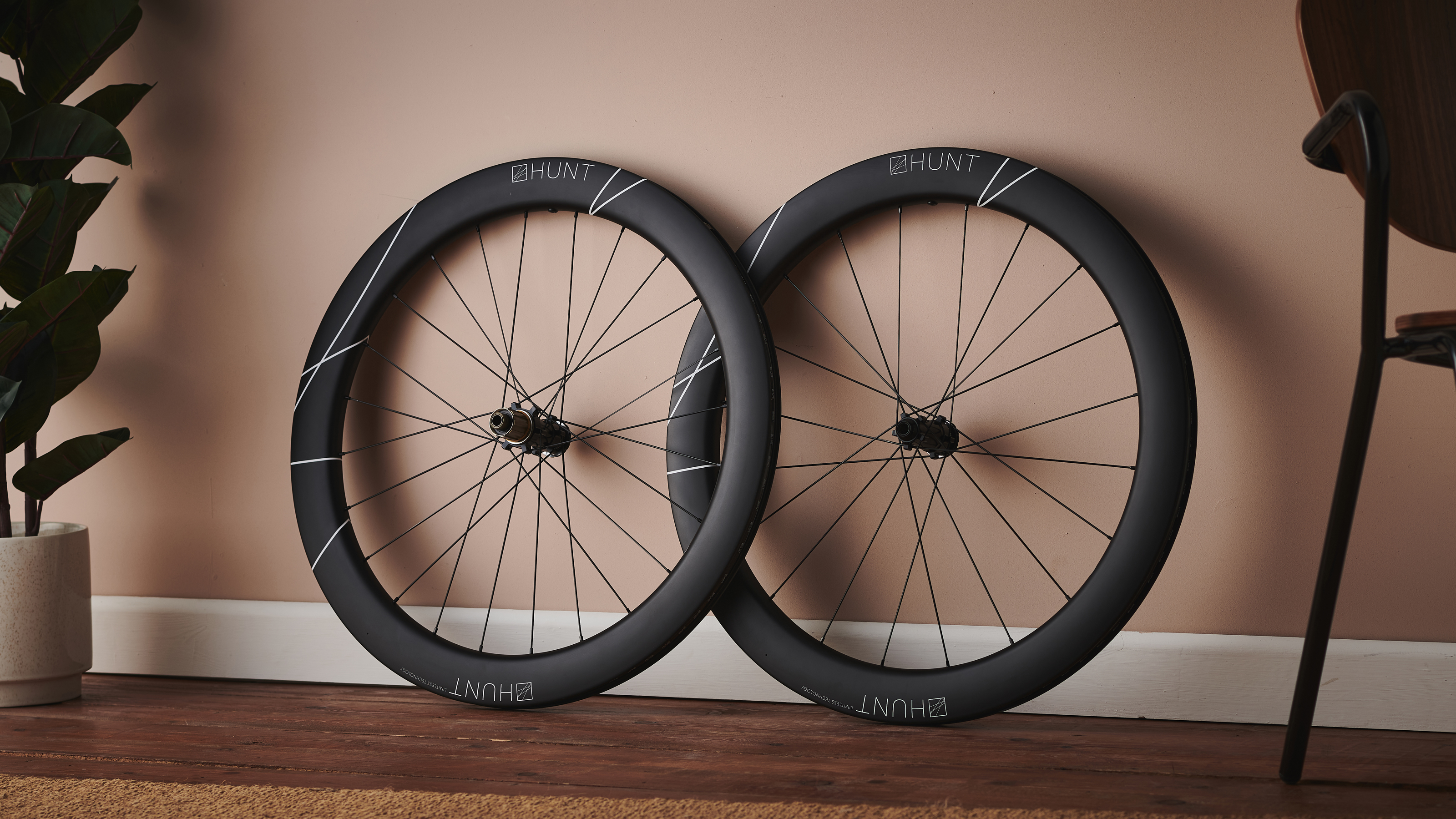
Specifications
Reasons to buy
Reasons to avoid
✅ You want excellent value: The wheels deliver top-tier aerodynamic performance at less than half the price of competitors.
✅ You want stability at speed: They remain stable on fast descents, enhancing rider confidence and safety.
❌ You want wide tyres: Our testing found these wheels to be fastest when fitted with a 25mm tyre.
Hunt threw away constraints on wheel width and profile when it designed the Hunt 60 Limitless Aerodynamicist wheels and the result is a wheelset that has a 21mm internal width, but an external width that bulges out to 34mm. Hunt has a patented hybrid structure to keep weight in check at 1,670g.
Although Hunt says that the wheels are optimised for 28mm tyres, our wind tunnel tests found that they were more aero when fitted with 25mm rubber. They also came out as the second-fastest overall, which is impressive given they cost less than half the price of others.
On the road, our review found that they were stable too, which we felt particularly on fast descents. With hooked rims, there's wide tyre compatibility and you're not paying the earth for top-notch aero performance.
Read our full review of the Hunt 60 Limitless Aero Disc wheelset for more info on design and ride experience.
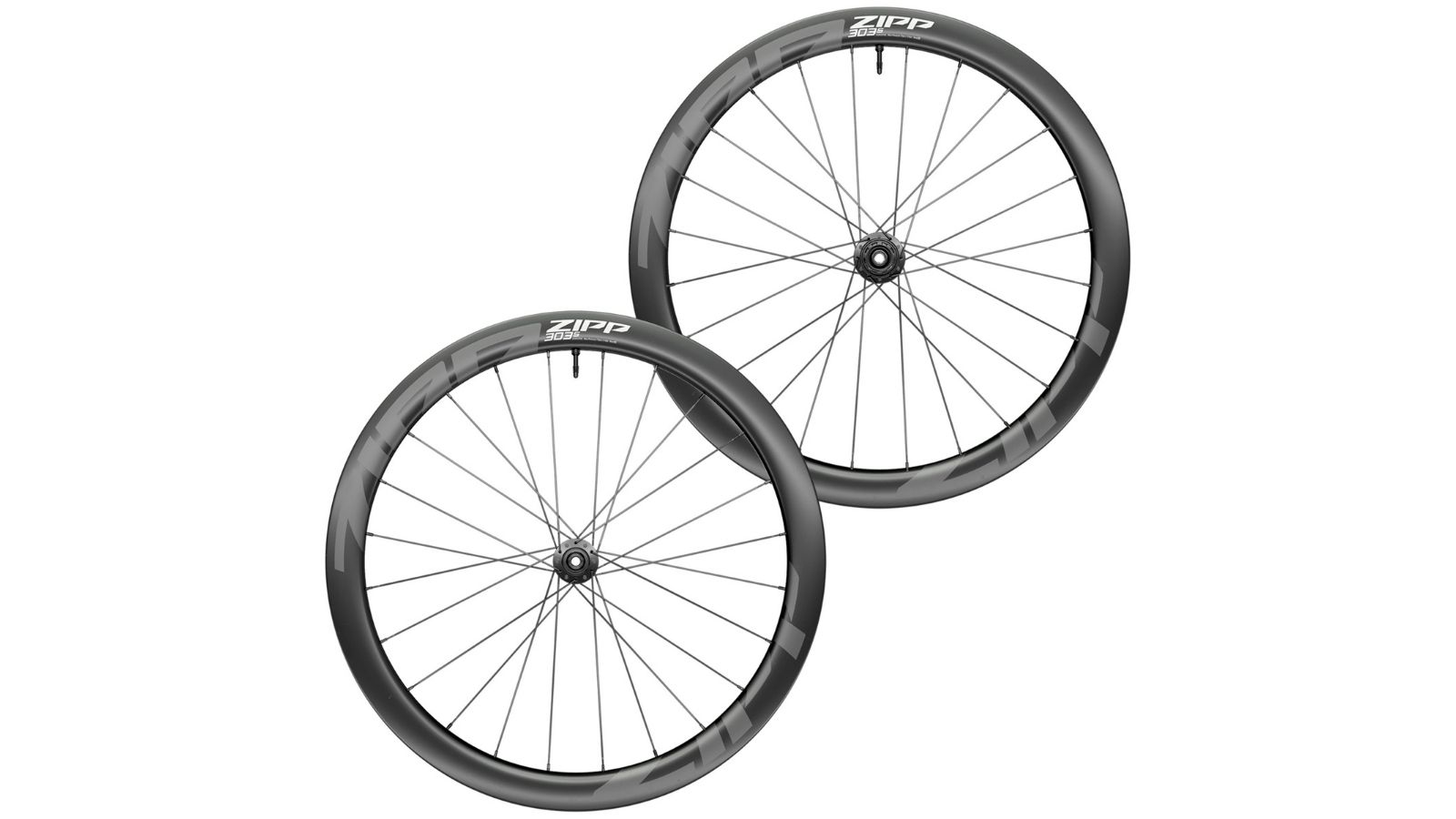
Specifications
Reasons to buy
Reasons to avoid
✅ You want versatility: The 303 S wheels are compatible with a wide range of tyre widths (25–50mm), making them suitable for varied riding conditions on-road and off.
✅ You want a smoother ride for less: An efficient, smooth ride at a more affordable price point.
❌ You want proper gravel tyre support: Gravel riders using wider tyres may find the 23mm internal rim width limiting.
❌ You want more tyre choice: The hookless rim design may limit tyre choice.
Many will see the 303 S as an affordable version of the Firecrest, however, while the ticket price is lower, there are some key differences. The rim is 5mm deeper and has a narrower 23mm internal rim width.
If you're looking for a wheelset that will offer versatility, then you could do much worse than the 303S wheels, which are compatible with tyres from 25-50mm wide. With that said, gravel riders looking to run wider gravel tyres will be better served by the 25mm internal width of the 303 Firecrests.
They weigh 115g less than their predecessor and fall under Zipp's Total System Efficiency ethos for wider and lighter wheels. This results in a smoother, faster and more cultured ride for a great price.
Harnessing the latest trend for wide tyre, low pressure, they're suitable for on-road and off, and as a bonus, they come with a lifetime warranty. Tubeless tyre installation is a breeze thanks to the hookless rim design, although not all tyre brands are compatible, most notably Continental (except the GP5000 S TR).
For a deeper dive, check out our Zipp 303S Carbon Tubeless Disc wheelset review.
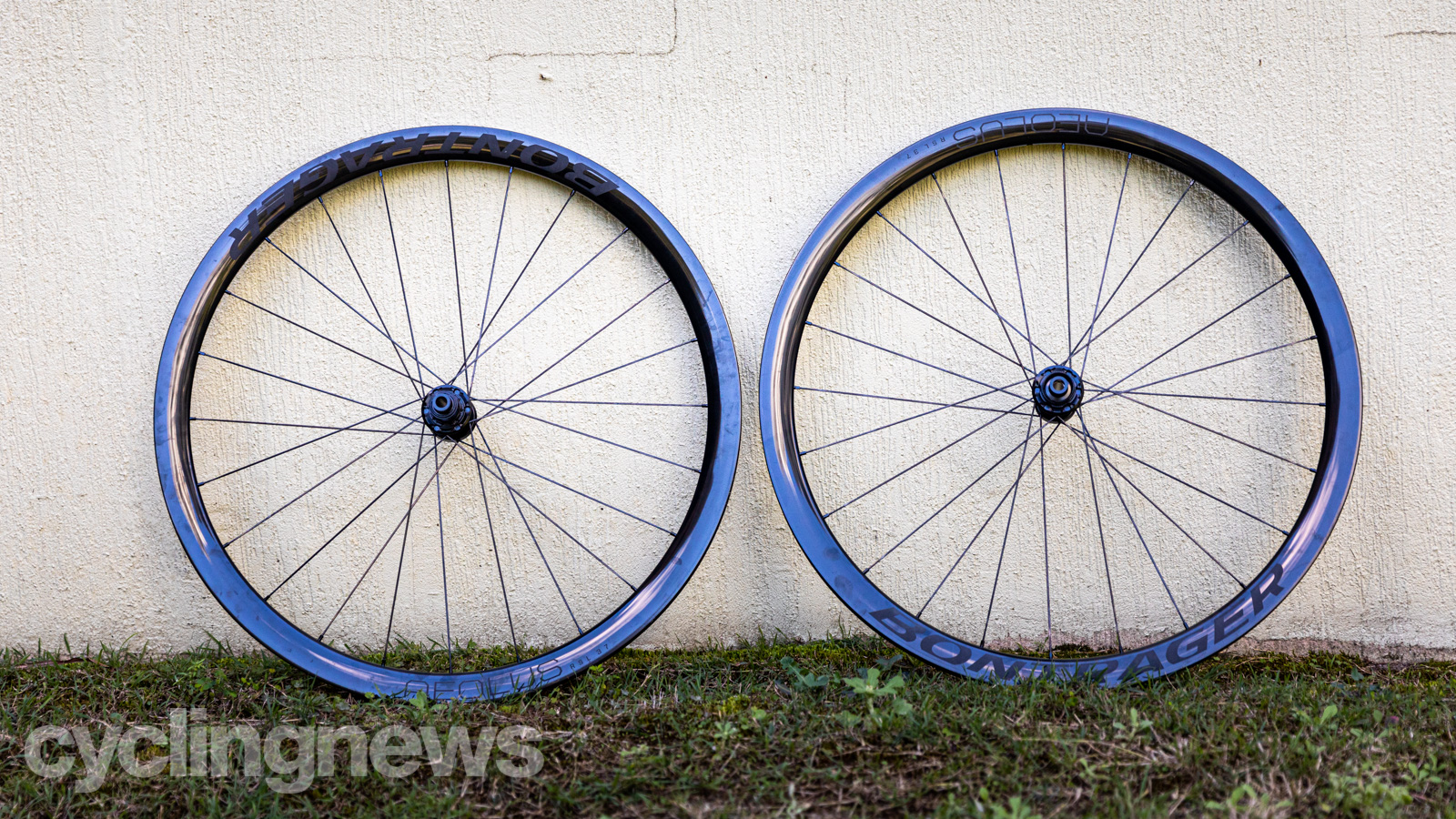
Specifications
Reasons to buy
Reasons to avoid
✅ You want excellent ride performance: The Aeolus RSL 37 wheels deliver flawless handling, grip, and stability, especially in crosswinds.
✅ You want easy setup and maintenance: Tubeless setup is simple, and the DT Swiss hubs are light, durable, and easy to maintain.
❌ You don’t want to spend a lot: The high price tag is a significant downside, even for a premium product.
❌ You want cutting-edge design: The 21mm internal width isn’t as progressive as some competing options.
When our reviewer's only hang-up about the Aeolus RSL 37 wheels is the price tag, you know you're looking at an outstanding pair of wheels.
While not quite as progressive as some options here, the 21mm internal width will play nicely with road tyres, blowing them up nice and wide to help with lower tyre pressures, increase grip and handling, and avoid pinch flats. Tubeless setup is a cinch too, blowing up with little more than a cheap track pump, and ride performance is simply faultless, especially when it comes to crosswinds.
They roll on DT Swiss' new Ratchet EXP hubs, which are light, stiff, durable, and super-simple to maintain, and if you manage to write off a wheel in the first two years, Bontrager will replace them and also backs them with a lifetime warranty.
Check out our Bontrager Aeolus RSL 37 TLR review for the full rundown.
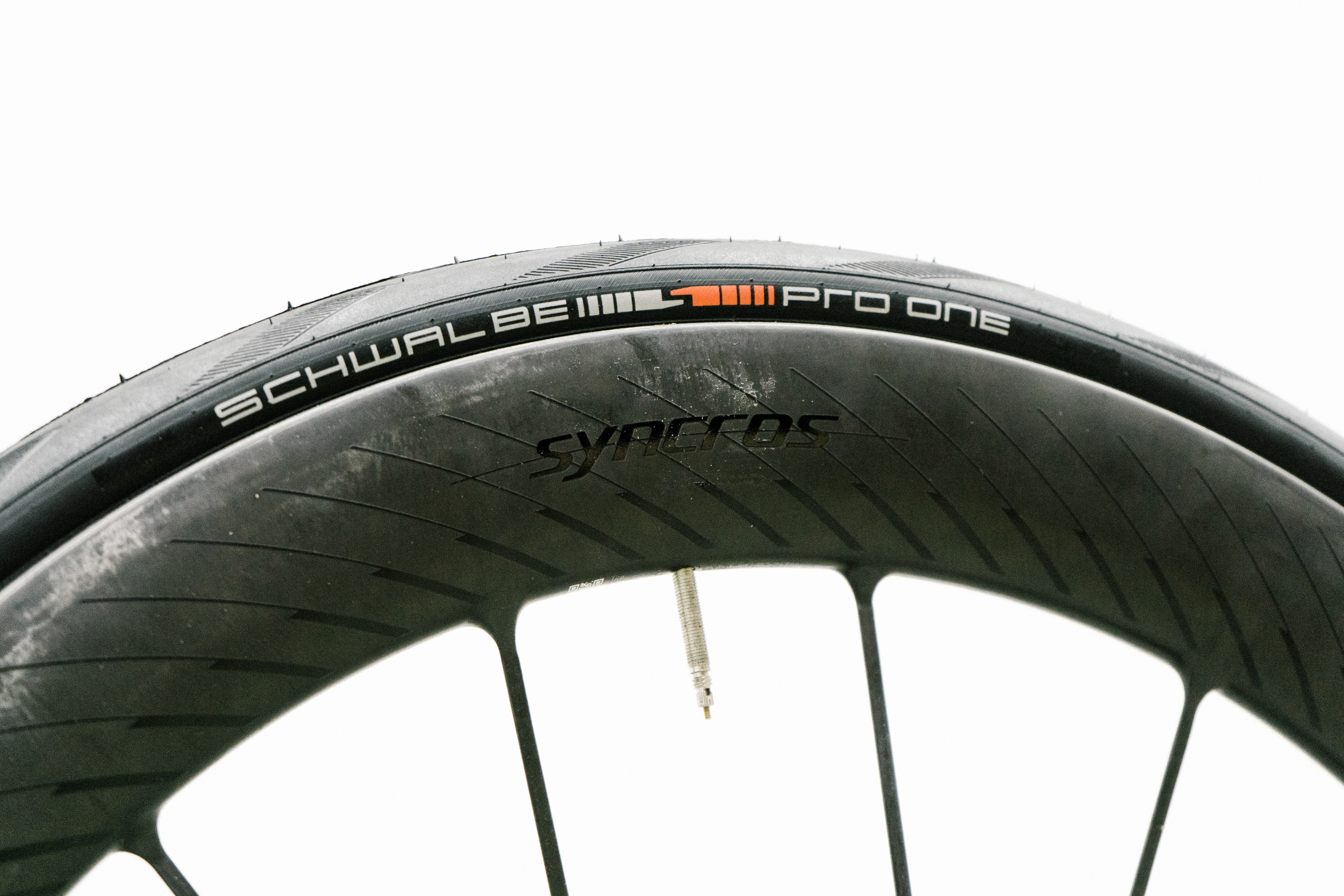
17. Syncros Capital SL Aero
Specifications
Reasons to buy
Reasons to avoid
✅ You want aerodynamic efficiency: The wheels showed a 10-watt-plus saving at 40km/h, indicating excellent performance in wind tunnel tests.
✅ You want a lightweight deep-section wheelset: At just 1311g for a 60mm depth set, these wheels are impressively light.
❌ You are prone to damaging wheels: The one-piece monocoque design means spokes can't be trued or replaced if damaged.
❌ You don't want to spend loads of money: At just 1311g for a 60mm depth set, these wheels are impressively light.
The runner-up in our wind tunnel testing, we found a 10 watt-plus saving at 40km/h for the Syncros Capital SL versus the Fulcrum 5 baseline.
The wheels are fully monocoque, with the rim, spokes and hub flanges built as one piece. This results in a very rigid structure and allows Syncros to reduce the spoke count to just 16 front and rear. This does mean that they can't be trued and damaged spokes can't be replaced though.
On the 23mm rim bed our 28mm tyres measured 30mm and the 1311g weight is low for their 60mm depth. There's no need for rim tape either, which helps save weight and simplifies tyre setup.
The corollary of the bleeding-edge tech and amazing looks is an eye-watering price tag, the highest of the 18 wheelsets we took to the wind tunnel.
The tech is explained in more detail in our Syncros Capital SL wheelset launch story.
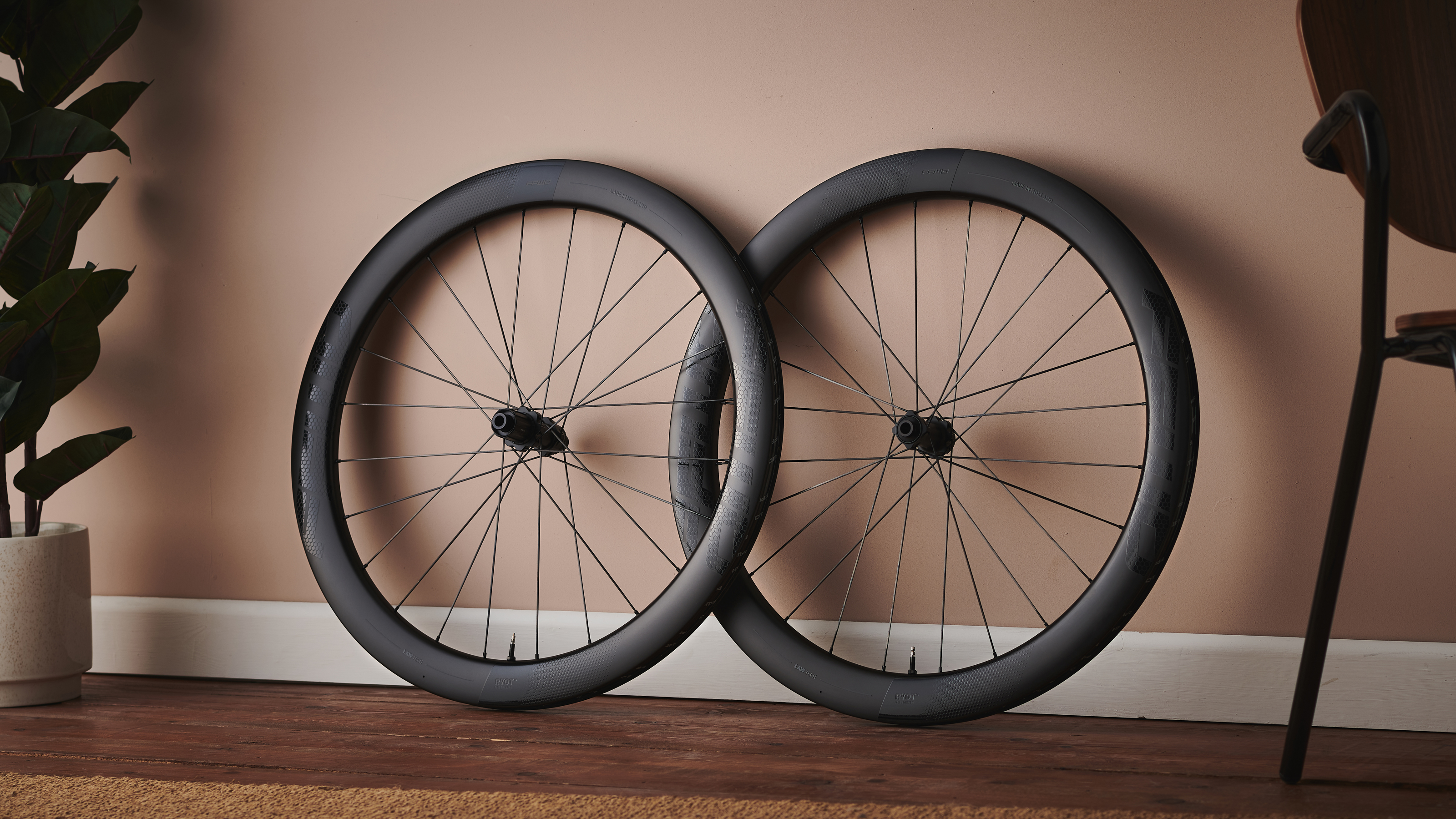
18. FFWD Ryot 55
Specifications
Reasons to buy
Reasons to avoid
✅ You want aerodynamic performance: Despite less-than-ideal test conditions, the wheels still performed respectably in the wind tunnel.
✅ You want easy tubeless setup: We found tyre setup to be a simple process.
❌ You want a lightweight wheelset: At 1750g, the wheels are heavier than expected for their depth, especially noticeable on steep climbs.
The FFWD Ryot 55 wheelset is a pretty solid all-rounder that we'd happily recommend to racers and competitive club riders alike. When we took them to the wind tunnel, our testing protocols put them at a slight disadvantage (they were competing against wheels 5-10mm deeper, and we tested with 25mm tyres, while these are designed for use with 28mm) but despite that, they came out in a respectable 6th place.
Their weight is a little heavier than we'd expect for a 55mm wheel, at 1750g with valves, but we only noticed that extra weight in the real world when trying to accelerate on a 12% climb.
During our testing, we had no issues with crosswinds, no durability concerns, and tubeless setups were a walk in the park each time.
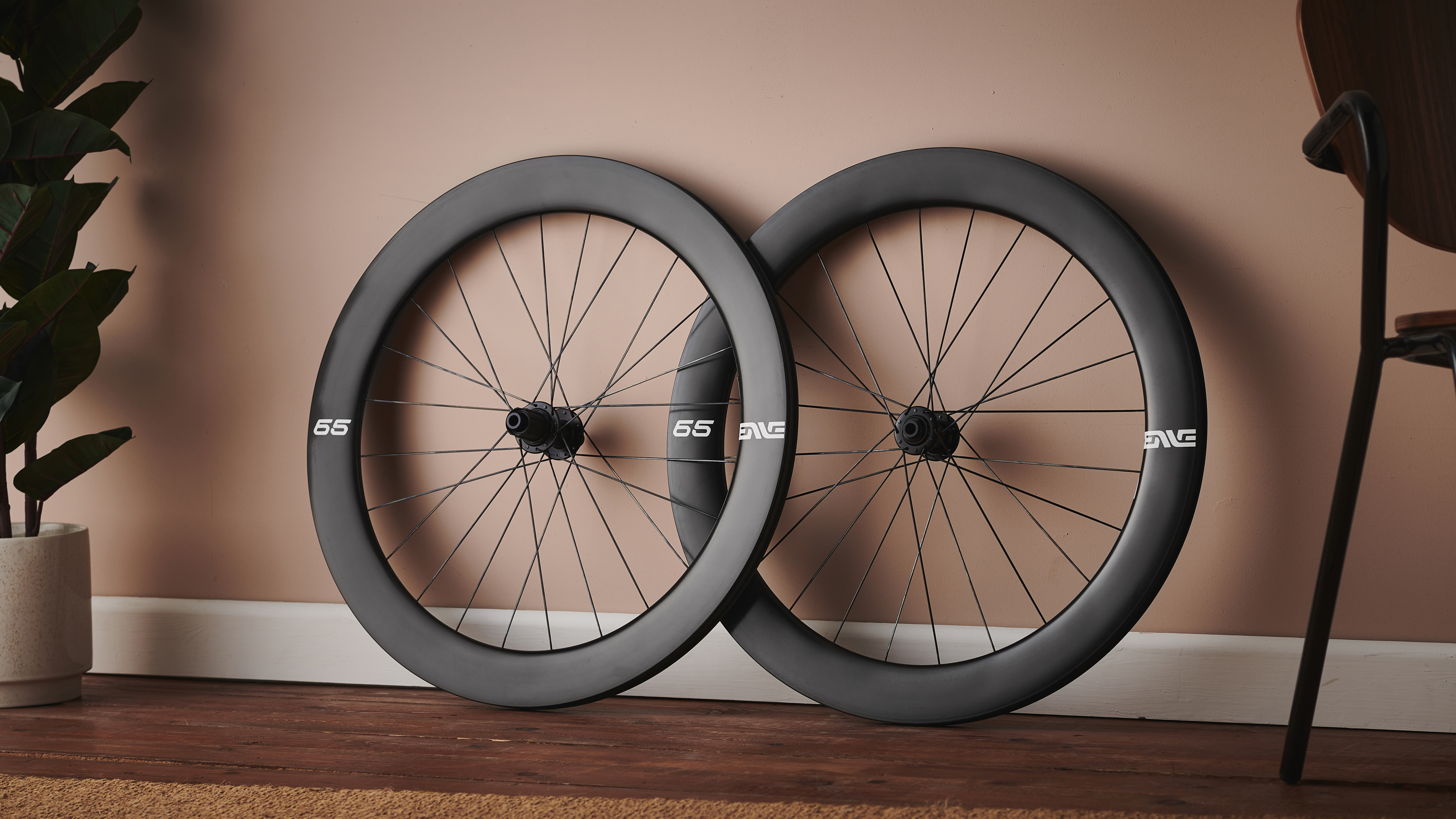
19. Enve Foundation 65
Specifications
Reasons to buy
Reasons to avoid
✅ You want strong aero performance: The Foundation 65 wheelset scored well in our wind tunnel testing.
❌ You want wider tyre compatibility: The aero optimization is specifically for 25mm to 28mm tyres, which may limit broader tyre choices.
The Enve 65 wheels (Enve has dropped the Foundation moniker) come from Enve's lower-priced wheel range. Nevertheless, we were impressed by the aero performance in our comparative wind tunnel testing of 10 aero wheelsets, where they were the fourth best of those tested.
Enve says that the wheelset is aero-optimised for 25mm to 28mm tyre width and are tested at wind speeds from 32km/h up to 48km/h, so there's a wide speed range for which they've been aero-tested in development. They also include Enve's patented wide hookless bead tech, designed to protect the rim and your tyres from damage from a hit on poor road surfaces.
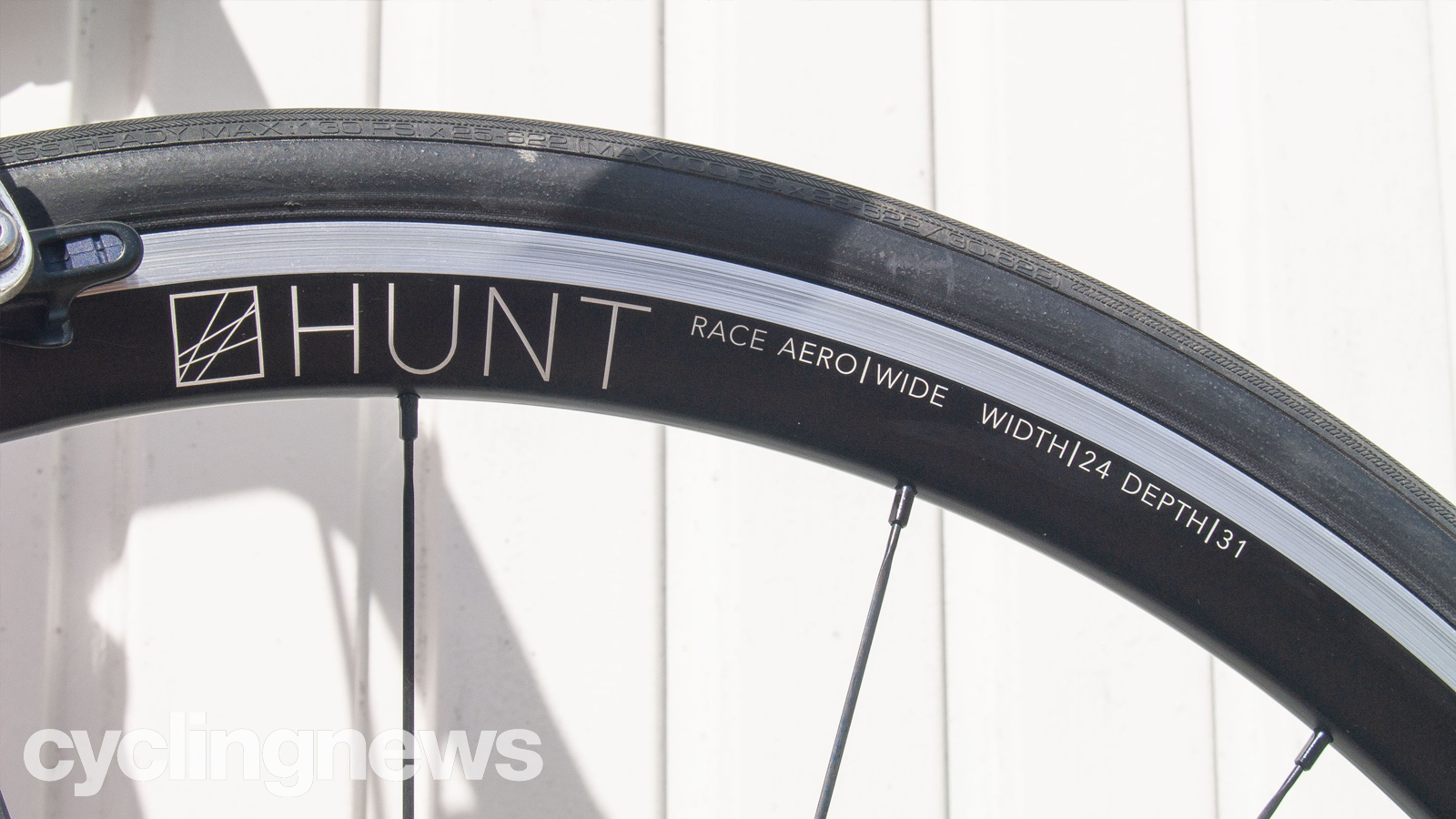
Specifications
Reasons to buy
Reasons to avoid
✅ You want versatile performance wheel: They are lightweight, fast on straights, and stiff without sacrificing comfort, making them suitable for varied terrain and year-round use.
✅ You want excellent value for money: The Hunts Race Aero Wide wheelset offers top-tier features and performance at a very competitive price point.
❌ You want to run wider tyres: The narrow 19mm internal rim doesn't support wider tyres as well as contemporory rims designs.
❌ You want carbon wheels: Alloy construction is durable but adds additional weight to the wheelset.
Hunts Race Aero Wide wheelset is incredible value for money when you consider what you get in the box. At this price point, there doesn’t appear to be anything that can match them. They’re light, they appear to be faster on the straights for the same effort, and they’re also very stiff without being uncomfortable.
You get decent hubs, in the form of Hunt’s Race Straight-Pull with 10-degree RapidEngage four-pawl freehub, high-quality sealed cartridge bearings from Ezo, and the freehub is coated with H_CERAMIK coating, which Hunt says increases protection from cassette damage.
If you’re looking for a relatively inexpensive wheelset that will suit the majority of your types of riding all year round (save for the harshest of winters) and can even be used off-road as well as on it.
We've got a full Hunt Race Aero Wide wheelset review if you want some more info.
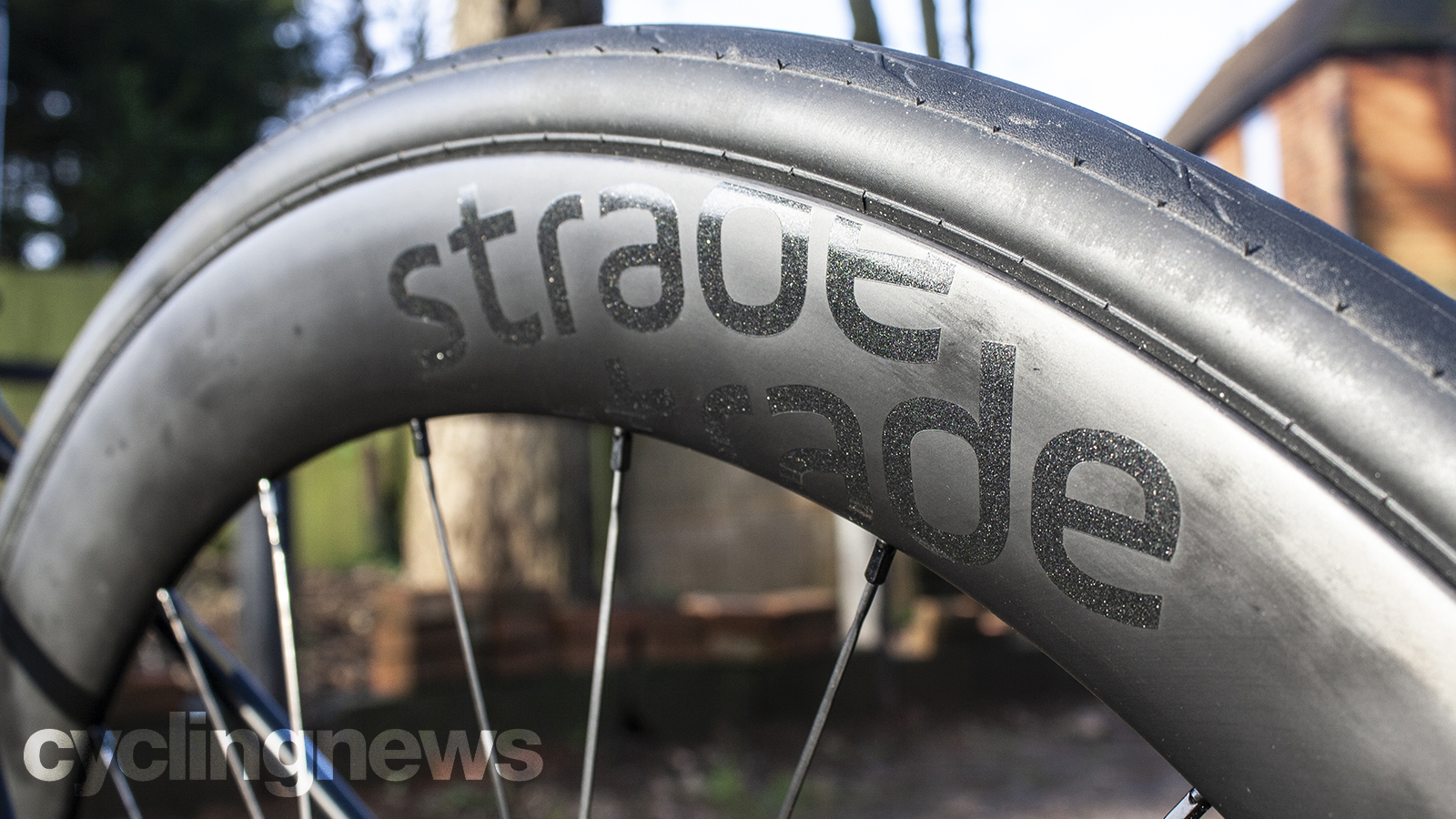
Specifications
Reasons to buy
Reasons to avoid
✅ You want a performance budget wheelest: Aero considerations and excellant ride feel is offered at a competitive price.
❌ You ride at slower speeds: The Strada's really come into their own at 40kph and above.
As a robust, disc-equipped option, the Strade wheelset is versatile in that it can be used for both training and racing and can be run using traditional tubes or tubeless tyres, the latter will, of course, provide a far more engaging and granular riding experience.
The wheels use machined Parcours-branded alloy hubs laced in a 24 front/rear, two-cross pattern with Sapim CX-Ray aero spokes - the freehub body comprises a four-pawl, three-degree engagement system. Both hubs employ EZO cartridge bearings and centre lock disc threading and have been optimised for 12mm thru-axles front/rear (adapter kits are available for other axle standards). The hubs can be optioned with ceramic Kogel bearings on request. The wheels come ready-to-ride as a tubeless application out of the box with pre-installed rim tape and valves, and freehub spacers for 8/9/10-speed cassettes.
Our Parcours Strade disc wheelset review will answer any questions you may have.
How to choose the best road bike wheels
Whether you're after a set of bombproof winter wheels, a race day only set of deep sections, or something in between that you can venture off down a gravel track on then there are going to be a few universal considerations that will inform any choice you make.
Rim width, tyre and tubeless compatibility, and braking options are going to be considerations alongside the usual budget constraints to make sure you get the most for your money.
- Is weight important? Depending on the type of riding you do, weight will either be incredibly important or not as paramount as you might think. If much of your time riding is spent jaunting around your local climbs, then you will likely want to consider a lighter wheelset than a crit racer, for example.
- Do you need aerodynamic deep-section rims? The flipside of this, of course, is aerodynamics. Shallower rims tend to perform worse in higher speed conditions, so if most of your riding is spent tearing up the local chaingang on flat roads, you might want to opt for something with a 50mm or deeper rim profile.
- What tyres do you use? Similarly important is your go-to when it comes to tyre choice. If you live in an area with particularly rough roads and tend to opt for wider rubber as a result, then you may want to discount wheels with narrower internal rim widths, as it can change the overall profile of a tyre. In general, if you ride wider tyres, say 30 or 32mm, you will be better off on a wider internal rim. It's also important to abide by ETRTO standards when considering tyre and wheel choice.
- Hooked or hookless? This is a divisive topic currently but from our own experience, if you use compatible tyres and follow ETRTO guidelines, then you shouldn't encounter any hookless rim issues. Not all tyres are hookless compatible, so always cross-check compatibility on the tyre and wheel manufacturers' websites to ensure they will work together.
- Do you ride rough road surfaces or even a little gravel? Not all wheels are made equal, and if your riding tends to foray into mixed road surfaces or even just heavy mileage, you might find out the hard way. If you are intending on putting a lot of kilometres or mixing up your riding, it can be worth sacrificing a few grams for a wheel that won't let you down.
Everything you need to know about road bike wheels
Are wider rims better?
The trend in modern road bikes is moving towards wider tyres, so modern wheels have wider internal widths to better support this wider rubber, all made possible by casting off the shackles of rim braking in favour of disc. If you have a road bike that can accommodate wider tyres (32mm isn't uncommon nowadays) then a wider rim (21mm internal or thereabouts) should be on your shopping list.
Conversely, if you're still running rim brakes, an ultra-modern wide rim may not clear your brake callipers and frame, so make sure to consult the tech specs of your brakes before spending your hard-earned cash.
Are deeper wheels faster?
We tested a load of wheels in the wind tunnel and in general, deeper wheels will be more aerodynamic, and therefore faster. However, bombing about on 80mm deep rims in a gale can be a frightening experience, as there is more material to catch crosswinds. Improved rim shapes, from a 'V' to a 'U' have certainly improved matters, but if you live somewhere super windy, it's definitely something to consider before purchasing.
Deeper wheels are usually more expensive too, given the added material involved. They can take longer to get up to speed, so may not feel quite so nimble. They will also be heavier, and while heavier will naturally mean slower uphill, the aerodynamic advantages on offer can still be had at low speeds, so in many cases, you won't feel any performance drop when the road points up.
Can I use any tyre on any rim?
In a word, no. You can run non-tubeless tyres on tubeless rims, with a tube, and you can run tubeless tyres on non-tubeless rims with a tube, providing they're all 'clincher' systems (i.e. designed for hooked rims). Some tubeless tyres, however, will only be tubeless compatible, and trying to fit a tube inside one will be a fool's errand. If you're unsure, check with the manufacturer, as things can get confusing.
You can only run tubeless with both a tubeless compatible tyre and rim combo, though Zipp wheels, for example, aren't compatible with 25mm Continental tyres, since the edge of the rim - known as the bead - is hookless.
Hookless rims are the new kid on the block, doing away with the hook on the inside of the rim bead that locks the tyre in place. These are absolutely usable only with hookless-compatible tyres, or you risk a blowout.
Can I use rim brakes on a disc wheel?
In general, no. Some rims have a brake track, but also come with disc-compatible hubs, but they're a rarity nowadays. Disc rims have no brake track, so not only won't you be able to stop but you'll also likely damage the rim if you try and clamp a calliper onto them.
What freehub do I need?
Wheels come with a freehub to match the cassette that's part of your bike's drivetrain. Shimano 11-speed freehubs are compatible with Shimano drivetrains from 8 to 12 speeds and SRAM freehubs up to 11 speeds.
Otherwise, you'll need a SRAM XDR freehub for cassettes from most SRAM 12-speed groupsets or a Campagnolo N3W freehub for Campagnolo drivetrains. Although in most cases you can spec the freehub at purchase, in some cases these might require you to buy a replacement freehub.
What are points of engagement?
Points of engagement refer to how many positions your freehub can engage with the wheels in when you start to pedal. More points of engagement will lead to faster pick-up or drive when you start to pedal.
You'll also see the degrees of engagement quoted sometimes. This is 360 degrees divided by the number of points of engagement. A freehub with 36 points of engagement will have 10 degrees of engagement, for example. More points of engagement will lead to a lower number of degrees of engagement.
What are ratchet or pawl freehubs?
Many freehubs use pawls to engage the freehub with the wheel hub. These are sprung metal pins in the freehub body that engage with teeth in the wheel hub.
In contrast, ratchet freehubs have two toothed rings, one on the freehub and the other on the hub that are forced together by a spring to engage the freehub. This gives more contact points than a pawl mechanism and is potentially more robust. It can be lighter too sometimes.
What axle standards do road bike wheels use?
Rim brake road bike wheels have historically used quick-release skewers and or had 9x100mm front and 10x130mm rear axles. Over the last few years, that's changed, with most disc brake wheels using a 12x100mm front thru-axle and a 12x142mm rear thru-axle.
You occasionally find quick-release disc brake wheels with a 10x135mm rear axle. There are even fewer road bikes that use 12x110mm Boost front axles and 12x147mm Boost rear axles or that use 15x100mm front thru-axles.
Often you can buy adapters from the wheel brand to fit other axle standards, but it's worth checking that your bike is compatible with any new wheels you plan to buy.
How do we test?
You'll see from the above that we've invested in wind tunnel testing of wheelsets, to provide a consistent set of head-to-head data. Actual weight and other specs are also important considerations which we check.
But watts saved and wheelset weight only part of the equation, so we've also put in the distance on all the wheels above to compare ride feel and ride experience across a variety of riding and racing and a range of conditions, with the results documented in our detailed reviews.
Which wheelsets has Cyclingnews wind tunnel tested?
In alphabetical order, the wheelsets which we took to our November 2024 wind tunnel test were:
Black Inc 48/58
Black Inc 62
Cadex 50 Ultra
Campagnolo Bora WTO 60
Enve SES 4.5
Enve SES 6.7
Hunt Sub 50 Limitless
Parcours Strade
Princeton Carbonworks Wake 6560 Evolution
Reserve 52/63
Roval Rapide CL II
Scope Artech 6.A
Scribe Core SuperLight 60
Shimano Dura Ace C50
Swiss Side Hadron Ultimate 500
Syncros Capital SL Aero
Vision Metron 60 SL
Zipp 404 Firecrest
In a previous wind tunnel test in August 2022 the ten wheelsets tested were:
- Shimano Dura-Ace C60 (R9200 series)
- Roval CLX II 60mm
- HED Vanquish RC6 Pro
- Hunt 60 Limitless Aero Disc
- Vision Metron 60 SL
- Enve Foundation 65
- Reserve 50/65
- FFWD Ryot 55
- Zipp 404 Firecrest (58mm)
- DT Swiss Arc 1100 DiCut 62 DB
The latest race content, interviews, features, reviews and expert buying guides, direct to your inbox!

Josh is Associate Editor of Cyclingnews – leading our content on the best bikes, kit and the latest breaking tech stories from the pro peloton. He has been with us since the summer of 2019 and throughout that time he's covered everything from buyer's guides and deals to the latest tech news and reviews.
On the bike, Josh has been riding and racing for over 15 years. He started out racing cross country in his teens back when 26-inch wheels and triple chainsets were still mainstream, but he found favour in road racing in his early 20s, racing at a local and national level for Somerset-based Team Tor 2000. These days he rides indoors for convenience and fitness, and outdoors for fun on road, gravel, 'cross and cross-country bikes, the latter usually with his two dogs in tow.
